
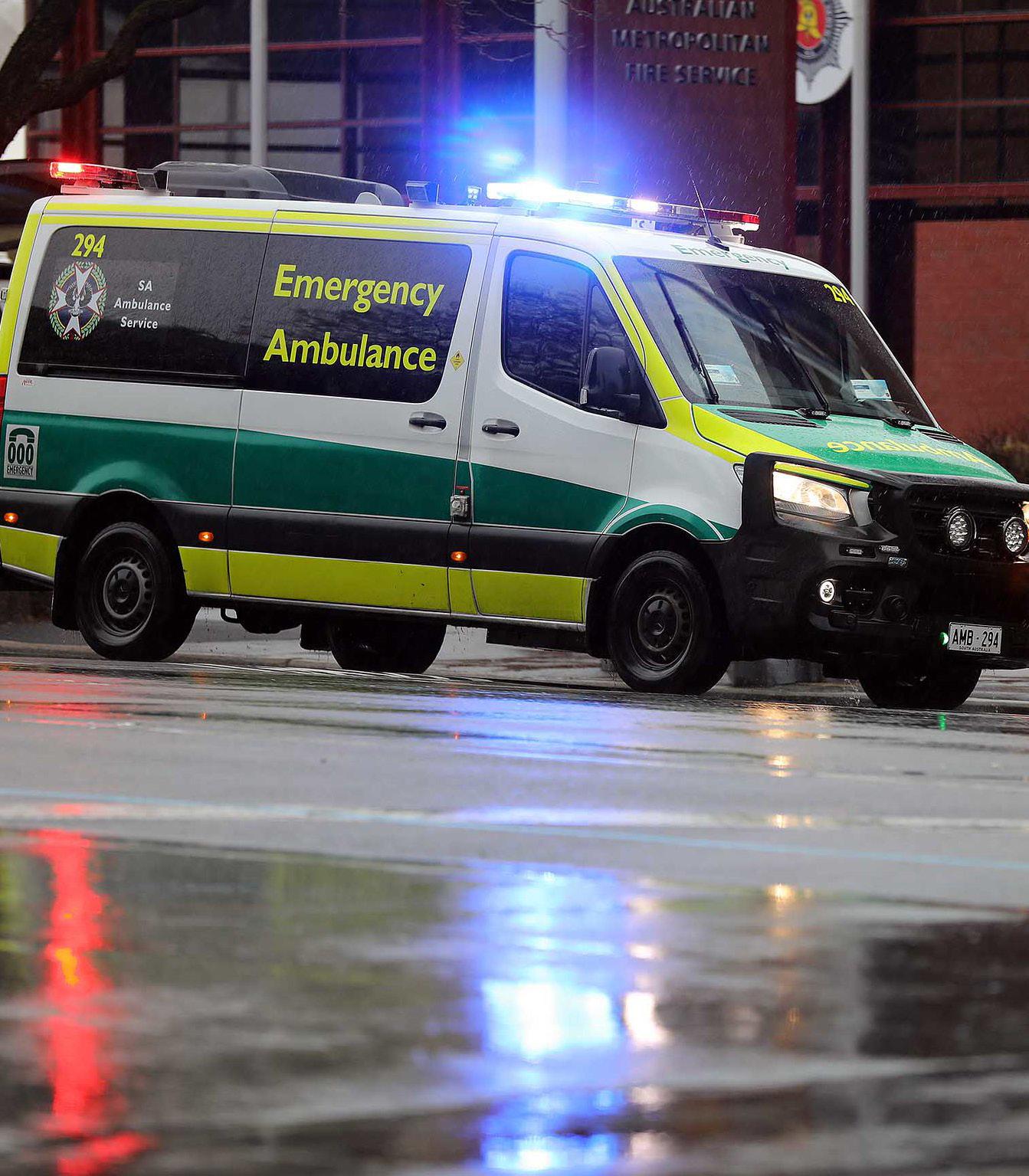



Eastern Guruma supports Australia’s leading iron ore miners and services the mineral resources sector across the Pilbara region of WA.

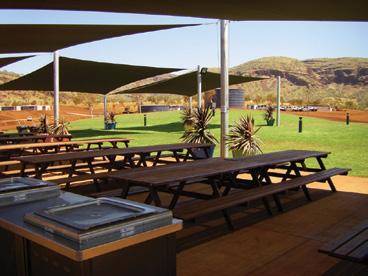
Mine site services
Eastern Guruma provides various mine site services including creating and maintaining access, road management, exploration works and rehabilitation.
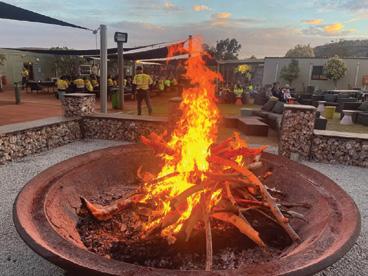
Integrated services is one of Eastern Guruma’s top specialties. The team tailors every service to ensure operational maximisation of client assets.

Rehabilitation & closure
Eastern Guruma provides and industrial contaminated area rehabilitation.
08 9325 2424
Civil construction
As an experienced civil contractor, Eastern Guruma has delivered experienced team.
The company has the ability to undertake detailed civil works and determine solutions to meet client needs and budgets.




Thank you to all our paramedics and ambulance officers who work hard every day to keep our communities safe. Our government will always support you and the essential work you do.
Yours sincerely,

Anthony Albanese MP Prime Minister of Australia Member for Grayndler












Treated correctly, your ESSS Defined Benefit Fund can be a big factor in helping you enjoy a comfortable retirement. So it’s important to weigh up the benefits right now and consider increasing your contribution rate.


With a defined benefit fund, you’re guaranteed a lump sum at retirement. It’s based on your average final salary multiplied by your ‘benefit multiple’. The great news is you have the power to increase your benefit multiple. One of the best ways to do that is to simply increase your contributions.
The sooner you start increasing your contribution rate, the more you can increase your retirement savings. For example, going from 0% to 7% could increase your benefit at retirement by as much as $495,000*. That’s a hefty sum.
You don’t want to miss out on that, so check your current contribution rate right now and see if you can afford a little bit more. Start feeding your super a bit extra today, and live life to the full in retirement.
To check or increase your contribution rate, call or visit:
*Figures based on 30 years of full-time service and a final average salary of $100,000. Emergency Services Superannuation Board ABN 28 161 296 741(ESSB) is the Trustee of the Emergency Services Superannuation Scheme ABN 85 894 637 037 (ESSSuper).
There are complexities, for example you are restricted to changing your contribution rate percentage once per calendar year and grandfathering arrangements apply to ESSS DB Fund members who joined the ESSS DB Fund before 12 May 2009. If you reach your maximum benefit multiple, your contributions will cease. Members who have reached the maximum multiple will be eligible to receive additional contributions from their employer to be paid into the ESSSuper Accumulation Plan. Please refer to the PDS or contact us for more information.
The information contained in this document is of a general nature only. It should not be considered as a substitute for reading the relevant ESSSuper’s Product Disclosure Statement (PDS) that contains detailed information about ESSSuper products, services and features. Before making a decision about an ESSSuper product, you should consider the appropriateness of the product to your personal objectives, financial situation and needs. It may also be benefi cial to seek professional advice from a licensed financial planner or adviser. An ESSSuper PDS is available at esssuper.com.au or by calling 1300 650 161.




Australasian Council
PRESIDENT
Tess Oxley (HSU NSW)
VICE PRESIDENT
Faye McCann (Workers First Union NZ)
Alistair Vagg (UWU Qld)
SECRETARY
Josh Karpowicz (AEA SA)
ASSISTANT SECRETARY
Simone Haigh (HACSU TAS)
Erina Early (UWU NT)
TREASURER
Olga Bartesek (VAU VIC)
ASSISTANT TREASURER
Simon Gallagher (TWU ACT)
AMBULANCE ACTIVE JOURNAL ENQUIRES
Craig Berger ( CWA ) 0426 954 744




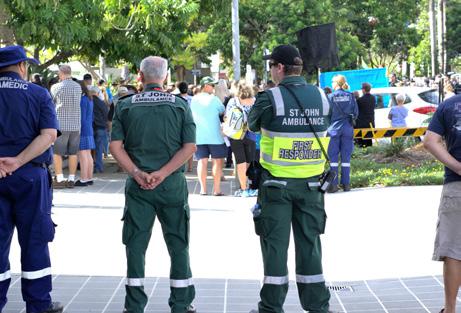





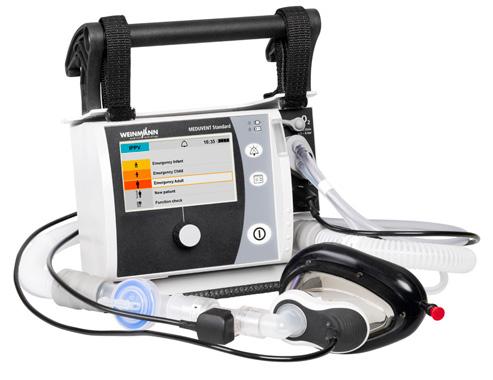


EVERY MONTH, AS I SIT DOWN TO write this column, I’m reminded that our profession doesn’t move forward because of executive strategy papers or glossy organisational diagrams. It moves forward because of the people who show up — every hour of every day — and hold this system together. This was even more apparent at the recent ACAU annual conference, hosted in Melbourne by the Victorian Ambulance Union. A great time was had, however time after time, unions around the country and New Zealand highlighted the attempts of senior executives to pit different workers against each other. Particularly dispatch and on road workers in fatigue management and police and paramedics in cases involving Mental Health. The truth is we aren't resourced appropriately, and our health systems are operating on thin budgets. The only way we can successfully fight for these issues to change is if we stand together.
That means everyone: paramedics on the road, Control dealing with impossible call volumes, the educators, the logistics and fleet teams keeping broken systems running, admin and support staff, our managers at station and zone level trying to shield

their teams, and every worker behind the scenes who never makes it into the Minister’s press release.
We are one workforce. We feel the same pressures. And we carry the consequences when the organisation fails to plan, fails to listen, and fails to resource the service properly.
Lately, though, we’ve seen a familiar pattern re-emerge — one that does nothing to improve patient care and everything to deflect accountability. It starts small: a quiet suggestion that “certain groups” aren’t performing, or that one section of the workforce is the reason KPIs are slipping. It spreads through rumour, closed-door briefings and carefully chosen language in internal updates. And before long, the narrative takes shape: that the problems in ambulance sit somewhere within the workforce, not the executive suite.
Let’s be honest: this tactic is as old as the ambulance service itself. When leadership can’t fix the big structural issues — workload, demand, vacancies, fatigue, resourcing — they look for a smaller problem they can point at. And too often, that “problem” is us.
But here’s the reality they don’t say out loud:
• This system doesn’t break because paramedics are tired — it breaks because executives ignored fatigue warnings for a decade.
• Control doesn’t struggle because they “don’t prioritise well” — they struggle because they’re understaffed and drowning in calls.
• Managers aren’t “failing to manage performance” — they’re firefighting the consequences of decisions made far above their pay grade.
• Nobody is the weak link — the weak link is chronic under-resourcing dressed up as “innovation”. And the last thing we should ever do is let them pit one group against another. Because division is not an accident — it’s a strategy. It’s much easier to point the finger at workers than take responsibility for executive decisions that have put NSW ambulance services under enormous pressure nationwide.
The truth is this: we rise or fall together. When we stand united — paramedics, Control, managers, support staff — we’re an unstoppable voice for safer staffing, genuine professional respect, and workplaces that don’t wear people down to the point of collapse.
When we let senior executives wedge us apart, they win.
When we hold the line together, we win. So as we head into another challenging year, I’m asking every member to stay connected, stay informed, and refuse to let anyone tell you that your colleagues are the problem. The only people who benefit from that story are the ones who created the mess.
We are stronger together
We are louder as unionists.
And when we act together, we are impossible to ignore.
In solidarity, Tess

THIS SEPTEMBER, DELEGATES FROM across Australia and Aotearoa–New Zealand gathered in Melbourne for the annual ACAU Conference, proudly hosted by the Victorian Ambulance Union (VAU). The conference once again highlighted the value of coming together to share our collective experiences, achievements, and challenges we face representing our members.
What continues to set these conferences apart are the conversations and shared experiences. These are absolutely invaluable in helping to shape our advocacy, campaigns, and how to better tackle the common challenges we face.
While each of our jurisdictions faces unique industrial and operational challenges, our shared purpose to advance our members’ rights, conditions, and safety remains our greatest strength.
The event concluded with a wellattended gala dinner at the Melbourne Sea Life Aquarium, dining literally under these amazing animals. The evening was attended by some special guests of ACAU, members of the VAU team who helped to coordinate and organise the conference; A/ Professor Louise Reynolds, Chief Paramedic with Safer Care Victoria; Steve McGhie, local member for Melton and founding

member of the NCAU; and Craig Berger and Jason Jeffery from Countrywide Austral, who have been key supporters of ACAU and publishers of ACAU’s Ambulance Active journal for many years.
The event offered delegates the chance to reconnect, reflect, and strengthen the relationships that underpin the collective work of ACAU, and was a way of saying thank you for all the work each and every one of our delegates from across Australasia puts in, often in their own time, representing and advocating for others.
A highlight of the conference was the inspiring address by ACTU President Michele O’Neil, who spoke powerfully about the importance of worker-led action in shaping safer and fairer workplaces. Michele outlined how, despite decades of productivity growth, wages have lagged behind, leaving workers around 18% worse off than if wages had kept pace. She noted that union-led campaigning has driven major national reforms in recent years, including:
Same job, same pay; multi-employer bargaining; expanded secure jobs; paid domestic and family violence leave; improvements to paid parental leave and superannuation on parental leave; industrial
manslaughter laws; penalty rate protections; wage theft criminalisation; bans on engineered stone; and gig-worker protections.
Michele reminded us that these rights only matter if workers know about them and can exercise them, and encouraged delegates to continue building union density to protect these gains.
She also reflected on the rapid rise of artificial intelligence in workplaces, reinforcing that AI must be shaped with workers, not done to workers. She emphasised the need for: guardrails to prevent exploitation and bias; strong privacy and monitoring protections; job security and training; union involvement in workplace implementation; and AI agreements to protect workers.
Her message was clear: technology must never replace the skill and humanity fundamental to our work, and unions must remain central in how AI is implemented. This is more important than ever for our members in the health and emergency services industry, where privacy is paramount and our members must be able to make decisions independently in the best interests of our patients and communities. AI must be used to support their important work., not replace or surveil.
Michele closed by honouring the generations of workers who fought to win the eight-hour day, reminding us that the struggle for fair hours, safe rosters, and time with family continues, particularly for our members who work 24/7 yet deserve a life outside of work.
Josh Karpowicz, a Registered Paramedic with 16 years’ experience, began his career with SA Ambulance Service in 2009. Now an Industrial Officer and Executive Member with AEA SA, Josh has also acted as Secretary, representing members in enterprise bargaining, employment tribunal matters, public campaigns, and policy negotiations. He combines his ongoing frontline paramedic work with strong union advocacy, advanced leadership training, and a drive to improving member conditions across the ambulance industry.

Delegates were equally energised by VAU OHS Organiser Yiota Paraskevopoulos, who delivered an excellent session demonstrating the power of strong workplace health and safety organisation.
Yiota showcased VAU’s strong focus on WHS and their extensive work empowering and training Health and Safety Representatives (HSRs), and their commitment to building strong local health and safety networks across the entire state.
Key messages included: HSRs are most powerful when informed, supported and organised; safety is union business and a human right; strong WHS clauses can protect staffing levels, patient care, and member safety; active use of HSR powers, including PINs and cease-works, can create real change; and building peer networks and dedicated training builds confidence to act.
This work has delivered meaningful outcomes for members, demonstrating that WHS structures, when properly supported, are one of the most effective tools we have to keep our members safe.
Conference delegates heard an update from Prof. Stephen Gough, Chair of the Paramedicine Board, on the proposal to regulate Advanced Practice Paramedics and future prescribing models. Momentum continues to build toward a national endorsement structure, with prescribing frameworks anticipated in coming years.
The Australian College of Paramedicine (ACP) also presented on future professional directions, including workforce classification work with the ABS; clinical practice framework and CPG review; professional practice and urgentcare programs; and a shared vision for Paramedicine requiring collaboration across the sector.
ACP invited ACAU to participate in upcoming consultation as part of work on a five-year strategic plan for Paramedicine, expected to be released mid-2026.

The emphasis on partnership with unions was pleasing to hear and will help ensure workforce voices remain central as professional scope continues to expand.
This year, ACAU welcomed two new Executive members: Simon Gallagher (TWU ACT) as Assistant Treasurer, replacing Darren Neville; and Erina Earny (UWU NT) as Assistant Secretary, replacing June Congdon. I’d like to extend a thank you to our returning Executive members continuing into 2026 for supporting ACAU’s advocacy in their own time.
I’d also like to extend our sincere thanks to Darren for his many years of contribution to ACAU. Darren’s commitment has been instrumental in strengthening ACAU’s structures and voice. We are grateful he will remain on Council and continue to share his experience.
Work to modernise ACAU governance continues, with updated Rules in the final stages of drafting to support formal incorporation, progressing through the Executive and Council. Additionally, several key policies, including Finance, Conference Guidelines, and Travel Reimbursement, were recently endorsed, further strengthening operational transparency and consistency.
Across both days of the Conference, jurisdictions shared reports on the major industrial, safety, and workforce challenges confronting ambulance services. While every state and territory faces unique pressures, common issues continue to intensify, including: fatigue and unsafe workloads; ramping and system congestion; workforce shortages and the growing junior and inexperienced workforce; occupational violence; mental health strain; and enterprise bargaining pressures.
What stood out is how each jurisdiction continues to innovate with industrial, political, and WHS campaigns and advocacy despite these challenges, showing the strength of collective action. The opportunity to continue learning from each other remains one of the key strengths of our unity and coming together.
We leave Melbourne reminded that real progress occurs when we act collectively, share knowledge, and keep adapting to our members’ challenges.
ACAU continues to work toward a coordinated national agenda, including federal advocacy to progress: mandatory Chief Paramedic roles; Senate Inquiry mental health recommendations; Paramedic superannuation reform; and national frameworks for Advanced Practice Paramedics. We look forward to further developing this work into the new year.
Finally, thank you again to VAU for hosting an exceptional Conference, and to every delegate who contributed to honest, meaningful discussion. Your work continues to lift our profession and protect the wellbeing of our members.
We look forward to seeing everyone again in Tasmania for the 2026 Conference, returning to the birthplace of NCAU more than two decades ago.
In solidarity, Josh Karpowicz Secretary, ACAU

TWAS THE MORNING OF THE 17TH OF September. The all important coffee mug was tightly grasped in hand. Old and new friends started to mingle. There were the reminders of old industrial reports and EBA negotiations being thrown around with solidarity, compassion and humour. There were twinkles in eyes as hints were cast as to what was to be presented. As a fresh baby delegate, the opportunity to connect with other ambulance unions from around Australia was an exciting prospect. Above all, connecting with people with similar mindsets, facing the same challenges and sharing the same frustrations was the key goal. Boy, was that goal met! We heard about some states having to undergo bargaining every 12 months, multiple states undergoing cultural reviews and the epitome of building standards with maggots falling from the roof onto desks at a dispatch centre. Needless to say the were several times where the suggestions of go-fund-me pages should be set up, or that we travel to New Zealand with torches and pitchforks
Council of Ambulance Unions (ACAU) 2025 conference in Melbourne on September 17th and 18th was an invaluable experience that underscored the united strength of paramedicine workers across the region.
The event successfully convened representatives from all Australian state and territory ambulance unions, alongside our union colleagues from New Zealand, solidifying a collective vision for the future of pre-hospital care and industrial strategy across Australasia.
The two-day conference was held at the Victorian Ambulance Union (VAU) office in North Melbourne and was structured to tackle both the core industrial challenges and the rapidly evolving clinical landscape.
(we’ve got your back guys!). We heard about fathers only being able to take five days of paternity leave before switching to sick leave, to overwhelmed complaints systems. We heard it all. There was disgust, there was outrage and there was downright acrimony. Whilst the anger was built, the conversation turned to what we can do. How we can build hope into the anger, and turn that anger into action. This conference was a reminder about what we all do everyday, and what we continue to do for our people. United we stand, divided we fall. We came together to talk about what we are dealing with as separate states, but then began throwing ideas around about how others have overcome their challenges. It provided the much needed boost for everyone. With the bad, we also heard of states increasing their pay for their members, increasing their sick leave and building in opportunities for members to train whilst on shift. It was warming to hear about cumulative increases to meal payments the later they are taken, and
Day one focused heavily on industrial relations and the persistent fight for better working conditions. A clear highlight was the keynote address by ACTU President Michele O’Neil, who powerfully reinforced the union movement’s commitment to protecting essential service workers.
Her discussion centered on the imperative of securing real wage growth that keeps pace with cost-of-living pressures and the need for legislative change to curb excessive workloads and improve fatigue management across all jurisdictions.
Delegates throughout the day shared best practices on negotiating enterprise agreements that properly value the complex and highly skilled nature of modern paramedicine. Critical operational
parity to on road overtime pay when on workers compensation. The cumulative small wins are the part of union activity that we forget to celebrate, but this conference was a perfect opportunity to share these wins, with other people who know just how important it is to share in joint confelicity. Paramedicine is a continually evolving and dynamic profession, and also one of the youngest professions. We are standing at a precipice of deciding our identity and what our future day-to-day function looks like. With the attendance and relationship with the Australian College of Paramedicine at the conference, we came to understand that we all have a role to play in preparing and protecting the ambulance service that we provide to Australians. It is this that we should choose to be excited about. The best way to predict and prepare for the future is to create it together.
By Rachel Bjork
issues such as improving the efficient dispatch of ambulance resources, mitigating the debilitating impacts of hospital ramping on crews, and managing occupational violence were central themes across the different jurisdictions.
Discussions were highly animated regarding strategies to achieve national consistency in work-life balance and to enforce a true “right to disconnect,” ensuring paramedics can recover adequately from the high demands of the job.
Day two pivoted towards the clinical frontier, dominated by the crucial topic of regulatory change.
The most significant focus was the ongoing national proposal by the Paramedicine Board of Australia to formally regulate Advanced Practice
AS A FIRST-TIME ATTENDEE, WALKING into the 2025 Australasian Council of Ambulance Unions Conference was both exciting and humbling, a gathering of passionate unions and their delegates from across Australasia, united by a common purpose.
Day one of the conference set the tone for an inspiring and energising few days ahead. The morning began with ACTU President Michele O’Neil delivering a powerful reminder of why we do what we do—her reflections on the proud history and unwavering stamina of union advocacy left the room buzzing with purpose. Later in the afternoon, VAU’s own Yiota Paraskevopoulos (Occupational Health and Safety and WorkCover Specialist), captured everyone’s attention with her passionate presentation on developing a tailored OHS course for Health and Safety Representatives (HSRs), as well as all things OHS, sparking thoughtful discussion and plenty of questions from the floor. As the day drew to a close,
Paramedics. Specialist presenters detailed the specifics of the proposed area of practice endorsement for advanced critical and primary care, and importantly, the move toward independent prescribing.
This initiative was presented as a generational opportunity to transform healthcare access across Australia, particularly in underserved rural and remote areas where workforce challenges, including the difficulting in attracting and retaining Medical Practitioners in both general practice and primary care are most acute.
The collective union perspective was one of cautious optimism and strong advocacy: supporting the expansion of professional scope, provided it is matched by robust education, appropriate remuneration, and
we swapped notebooks for cocktail attire and gathered beneath the shimmering fins and scales of Melbourne’s Sea Life Aquarium for the gala dinner—an evening of laughter, networking and celebration of the shared values that brought us all together.
Across both days of the conference, we heard a series of insightful industrial reports that sparked reflection, collaboration, and solidarity among delegates. It was inspiring to see such a strong turnout from communication members (Triple Zero Call-Takers and Dispatchers) whose vital work takes place behind the scenes but is paramount to the work of our on-road members. The reports captured a year of hard-fought wins and valuable lessons: progress in securing better conditions and recognition for our members, alongside honest discussions about the challenges that remain.
Listening to the stories, both triumphant and tough, reminded me how resilient and dedicated our communications
teams are, and how much strength we draw from standing together and sharing our experiences across borders. I couldn’t help but feel excited for the year ahead—already imagining sitting at next year’s conference, leaning forward with anticipation to ask, “Okay, tell me exactly what happened?”
A massive thank you to Country Wide Australia for sponsoring the conference and to the Victorian Ambulance Union (VAU) for hosting such a wonderful event.
I shall be avidly awaiting the announcement date for the ACAU Conference 2026, hosted by HACSU Tasmania, a fitting return to celebrate a monumental anniversary for the ACAU Conference – back to where it all began!
In solidarity,
By Lani Campbell
Victorian Ambulance Union –Triple Zero Victoria Delegate
clear regulatory oversight. The consensus confirmed ACAU’s commitment to driving our profession forward, ensuring that enhanced capability directly translates into better career pathways for members and improved, culturally safe healthcare outcomes for the community.
The conference successfully fostered a platform for cross-border collaboration, allowing delegates to share industrial victories and operational challenges that transcend state lines.
This unity was carried over into the social sphere at the spectacular Gala Dinner held at the Melbourne Aquarium. Special guests included Steve McGhie (MP for Melton and former ambulance union secretary) and Dr Louise Reynolds (Chief Paramedic Officer, Safer Care Victoria).
The setting offered a relaxed and memorable atmosphere for delegates to network personally, building strong, professional relationships that underpin effective national and Australasian union coordination.
It was a privilege to represent the Victorian Ambulance Union (VAU) at the ACAU 2025 conference.
The key takeaway message for me was clear: the future of paramedicine is one of advanced practice and improved working conditions. This can only be achieved through continued cooperation and solidarity both nationally and across the ditch.
By Chris Collard


Every Nurse Can and Should Own Their Own Home.
Australia’s only true specialists in helping nurses finance and own their homes.
Nurses and ambos have unique pay structures which really affects your chances of buying your own home or refinancing opportunities.
We are the only mortgage broker that truly specialises in your income.This means you will have a better budget and better home



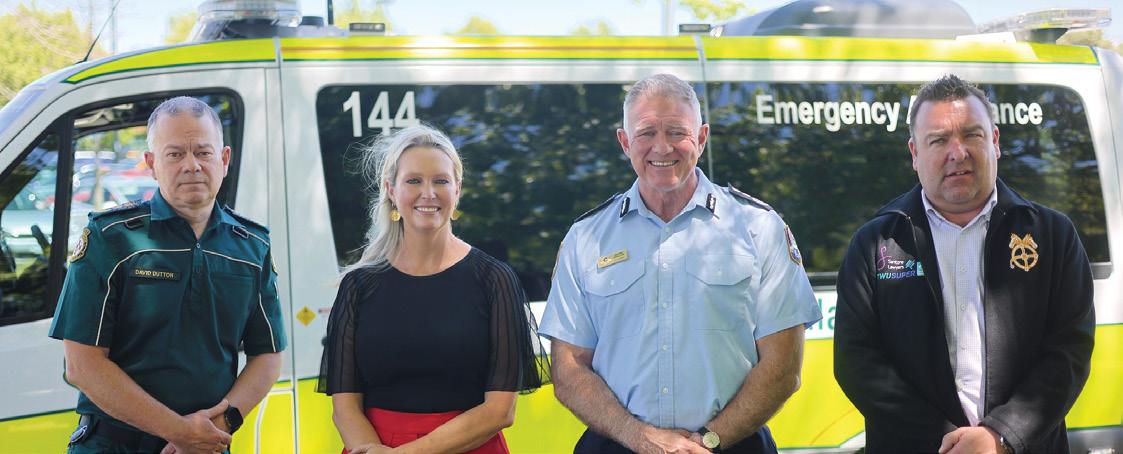
ONCE AGAIN IT WAS GREAT TO attend the Annual ACAU Conference, to not only yet again network with delegates and union representatives from around Australia & New Zealand but as always share ideas on how we all deal with the struggles all our members face working in the Ambulance industry. A big thank you to Danny, Olga and all the VAU team for hosting in Melbourne this year, it was up there with one of the best conferences and the dinner at the Aquarium was truly amazing. The TWU/ACTAS was able to send a contingent of 7 and once again all came home re-invigorated on how we can better represent our members not only locally but within the industry. Thank you also to the ACAU and all states for sharing your stories, experiences and challenges. It is not only worthwhile, it is becoming vital for all ACAU member states to work collaboratively in our common goals.
As discussed at ACAU Conference, we have commenced EBA negotiations in earnest on the back of recent variation discussions. Our initial focus remains on compensation for our flight members , who were unable to transfer to the new 44 hour roster and backpay for our ComCen staff who changed over to ‘Rolled In Rate’ of pay which last agreement brought their pay structure in line with

on road Paramedics. Other claims we are tabling for negotiation include pay banding, re-structuring of consultation processes, workforce planning reforms such as agreement on establishment figures, relief factors and unit utilisation rates, insertion and/or referral to spec’s on uniforms, vehicles and station amenities, reviews and agreement on Service Delivery model, WHS reforms which include
implementation of Psychosocial hazards inline with new ACT Government policies and various other service wide issues.
As always negotiations are slow in the early stages but so far negotiations have been refreshingly collaborative, and we remain optimistic of positive outcomes. We are also awaiting a formal offer from the ACT Government on pay rises which will be offered across the ACT Public service as all ACT public sector EBA’s are currently being negotiated.
The TWU have been continuing to try and build a collaborative relationship with our New Chief Officer, David Dutton who was appointed in May this year. So far discussions about our strategies for reform seem to be aligned despite any release of such formally. A sign of the trust built in collaboration with the Chief Officer, and also the Commissioner of Emergency Services and the Minister of Police and Emergency Services, was the just released report on the review of our 44 hour roster, which commenced in April 2024.
Whilst the report has only just been released publicly, so we are still digesting it, it was released openly “warts and all” and the Minister, Commissioner and Chief Officer have all gone on record publicly stating they will adopt all 13 findings in the report. For us the report highlights
not only staff shortages and resource deficiencies but many shortcomings within the service as whole. Most of these were highlighted by the TWU prior to implementation of the new roster but were either not followed through or ‘targets’ were not achieved. The major positive from the report is our members overwhelmingly favour working on the new roster pattern and there is now empirical evidence of its benefits for staff. Positives such as embargoed personal development time and decreased night shifts, among other benefits, has provided some ‘relief’ for all frontline members enabling them to continue working with other deficiencies in ACTAS.
The 13 recommendations from the report call for an increase in frontline staffing, monitoring service health and inform an appropriate relief ratio, develop and resource a sustainable recruitment and retention strategy, monitor workforce trends and attrition data, support critical capabilities and resolve organisational
inefficiencies and inconsistent practices, strengthen leave management and access to leave, establish leave utilisation performance targets, strengthen governance and evaluation of professional development time to maximise its benefit, strengthen data systems and enable integrated reporting, improve consistency and governance of workforce and operational data, strengthen and expand secondary triage and referral pathways for low-acuity demand, strengthen governance and change management capability and strengthen leadership and capability to support change initiatives.
In effect, the new roster has yet to achieve all the benefits claimed to allow its introduction but the TWU remains confident that if the recommendations are undertaken, many of which would be welcome in any state or territory ambulance service regardless of the roster worked, then many benefits to not only staff, but the community as a whole, can be realised. Issues raised by the TWU as
NEW SOUTH WALES ADHSU MEMBERS have seen significant escalation across multiple fronts of industrial activity. With membership now exceeding 5,000 financial members, NSW continues to be an active and organised member led union. This milestone is important not simply as a number, but as a reflection of a deeply engaged, memberled division that spans paramedics, Control Centre Officers, HealthShare PTOs, NETS clinicians, educators, operational managers, and private-sector paramedics and EMTs.
ADHSU members have made clear that the current NSW Ambulance Paramedic Award — last revised in 2023 — is not fit for purpose in 2025, nor capable of supporting the needs of a modern paramedicine profession. While the next expiry date (1 July 2026) may appear distant, members have insisted that reform work must begin now. Key themes emerging from member committees include:
• a professional career structure that reflects clinical skill and responsibility
• meaningful fatigue management provisions
• a classification framework that provides genuine development and recognises scope
• conditions aligned with a 21st-century health profession, not a 20th-century industrial model
• clarity and support for expanded clinical roles that reduce pressure on emergency departments
Paramedicine Reform Committees have now been established as a way for members to participate in shaping the next award.
Engagement has been strong, with members across all classifications contributing to the early stages of what will become a major industrial campaign in 2025–26.

SURPASSING 5,000 MEMBERS
– A WORKFORCE UNITED
This quarter NSW celebrated a historic milestone: over 5,000 financial
barriers to success prior to implementation have been highlighted, Thus, the TWU has been able to use this report to conduct a media campaign and immediately meet with the Minister of Police & Emergency Services, and the Chief Minister During those immediate discussions, the TWU called for an immediate injection of funding to avoid any critical failures in the ACTAS until these recommendations can be implemented in full. Thus, the last few days have been quite busy for TWU ACTAS delegates but being able to use such reports to gain not only access but agreement with Government on funding and changes for the benefits of our members is also one of the more rewarding areas of our work.
In Conclusion the TWU ACTAS members would like to wish all ambulance workers around Australia and New Zealand a very Merry Christmas and Happy New year and we look forward to progressing the conditions, safety, wellbeing and benefits for our members with you all in 2026.
ADHSU members. While impressive in its own right, the significance lies in who makes up these numbers:
• Paramedics
• Control Centre Officers
• DOMs and HSMs
• NETS
• HealthShare PTOs
• Private paramedics, EMTs and PTOs
• Educators and specialist staff
This diversity has transformed the union’s reach and strengthened collective action across the state.
Against a backdrop of the most injured workforce in the NSW Health system, worsening response times, systemic fatigue, chronic under-resourcing and an executive leadership that remains anchored in outdated managerial thinking members have demonstrated extraordinary unity.
A true sign of how ADHSU members are viewed by Ambulance Executives has been the Sirens article authored by the Professional Conduct Unit (PCI), which introduced the term “Submarining” — insinuating that paramedics and their managers might be deliberately
avoiding work or manipulating intensity, with implications of potential fraud.
This narrative is deeply offensive to a workforce that is routinely denied breaks, experiences the highest injury rates in NSW Health, operates in extreme fatigue conditions and is subject to daily executive decisions to leave rosters unfilled
The PCI intervention reflects a growing pattern of executive blame-shifting rather than addressing structural failures.
Member feedback has been unequivocal: accountability sits with the decisions made at the top, not with fatigued clinicians responding to unmanageable workloads. ADHSU members continue to fight to put an end to, and support those who are currently subjected to poorly managed PCI processes, including delays, procedural errors, and conduct concerns within PCI itself. This remains an escalating industrial and WHS issue.

Earlier this year ADHSU issued NSW Ambulance with a clear deadline: revoke the flawed Flexible Working Arrangements Operating Procedure and commence proper consultation.
The deadline passed without action from the employer.
In response, members across NSW launched a statewide protest campaign wearing FWA shields at stations and Control Centres. This action highlights a widespread and growing concern: the current FWA framework is inconsistent, inaccessible, and fails to recognise the needs of an exhausted and ageing workforce trying to balance family, health, and operational demands.
Further escalation is expected if genuine consultation does not occur.
After years of unsustainable demands, Metro DOMs escalated their industrial bans this quarter. DOMs join a broad crosssection of the workforce — VCCC, Control, on-road paramedics — in demanding that rosters be fully staffed.
Key issues include: chronic executive decisions to leave shifts unfilled under "fiscal responsibility", the unworkable delay in implementing the proposed Front Line Leadership model, increasing clinical
WELLINGTON FREE AMBULANCE:
The collective agreement has now been ratified with a 2.15% increase in rates and members now receiving double time for any shift overtime worked. This was a difficult negotiation being the last year of the government funding agreement and the current CEO resigning before negotiations conluded.
AUCKLAND ROSTER PROPOSAL:
St John is looking to amend the Auckland Cascading roster to a 4x4 pattern consisting of 11 hour shifts. This would result in a cut in hours going from an average of 42 hours to 38.5 hours but would enable those who want to continue a 4x4 pattern to reduce their number of night shifts. Due to the impact this change would have there is a longer consultation period than normal with reporting back on the consultation due next year.
AUCKLAND WORK LOAD:
Nationwide there has been an increase in workload but due to the number of people residing in Auckland, the current vacancy rate and a higher than usual sick rate, Auckland felt this impact the most. St John resorted to offering staff from other areas of the country a “Fly In Fly Out” option if they would commit to two shifts in Auckland on their days off, they would be flown to Auckland to do so and have their flights, accommodation and meals covered. Staff in the nearby regions were alternatively offered a “Drive In Drive Out” option with the offer of mileage to be paid. While the need for this has reduced it is still occurring and will most likely continue to be an issue until the next cohort of Auckland staff have completed their training and are released on the road next year.
risk borne by DOMs left unsupported and workload intensification due to a long-term shortage of operational managers
ADHSU DOMs have been explicit: operational managers and superintendents are not in conflict with each other — they are both victims of executive shortcutting. Initial discussions between both groups indicate strong support for a unified response to the failing FLM proposal.
Control Centres across all regions — Northern, Sydney, Southern, and Western — have now commenced coordinated industrial protest action. Members are pursuing a new non-clinical Control Centre award, recognising that workers performing the same role should not be subject to different rates of pay or vastly different conditions.
Current claims include: pay parity to prior to the 2023 Paramedic award increase, insertion of meal breaks into the award (none currently exist!!!!), increased leave provisions, a training allowance, a manual operations allowance and enhanced sick leave
Solidarity from on-road staff has been significant, with many wearing ADHSU badges in support — an action that, despite possible misconduct implications, reflects the depth of unity across the service.
PARAMEDIC
The Paramedic Council recently held an Prescribing Authority Exploration Rōpū to understand the strategic, operational and regulatory issues to be considered in the event that paramedics are provided authority to prescribe medicines. The input and advice from this Rōpū has enabled Te Kaunihera to decide that the right path is to continue exploring this option for paramedics in New Zealand especially given the current government backing and the potential advantages this has.
Over the past three months, UWU members across the Queensland Ambulance Service (QAS) have been engaged in the final and most intensive stages of the bargaining process for a new Certified Agreement. This period has seen significant mobilisation, coordinated member consultation, and constructive but determined negotiation with QAS and the Queensland Government, culminating in an in-principle agreement that secures no loss of conditions, strong improvements in key entitlements, and a clear framework for ongoing accountability and enforcement of workload commitments.
The process now moves into the consultation and balloting stage, with UWU members reviewing the full draft agreement before casting their votes.
August – Early September:
• Final rounds of bargaining meetings focused on critical member claims including fair workloads, attraction and retention allowances, fatigue management, secure rostering, and fair overtime arrangements.
• Delegates and UWU officials maintained a strong position that no agreement could be endorsed without genuine progress on finish-on-time protections and recognition of the realities of shift work, fatigue, and the pressures on operational staff. Mid–September:
• Negotiations reached a point of resolution on major items, with UWU securing commitments that no existing conditions would be lost, and that new provisions would enhance both fairness and safety.
• Members were kept updated through statewide delegate meetings, digital briefings, and member bulletins. October:
• Following final drafting discussions, an in-principle agreement was reached between UWU and QAS.
• Key outcomes achieved by members included:
• No loss of any existing conditions or entitlements.
• Improved finish-on-time provisions, giving members collective mechanisms to hold QAS accountable.
• An additional 10 hours of sick leave on top of the existing 96hour entitlement.
• Introduction of double time for overtime worked by all operational staff.
• A new night shift allowance recognising the impact of extended and late-night rostering on staff wellbeing.
• Strengthened workload and fatigue management clauses.
• Introduction of rural and remote single officer allowance.
• New entitlement around meritorious and special war service sick leave,
• A number of co-hort specific outcomes for CCP’s, Level 6 Managers
Late October – November:
• Consultation and access period commenced Monday, 27 October, running for 14 days.
• UWU delegates and officials launched a coordinated statewide information and consultation program, including:
• In-person sessions across regional and metropolitan stations.
• Online briefings for remote and shiftworking members.
• Distribution of detailed Fact Sheets outlining key wins and changes.
• Members were encouraged to review the full draft agreement and seek clarification directly from union representatives prior to voting.
November:
• QAS initiated the formal ballot period, with UWU supporting members to make an informed vote through workplace visits and digital communications.
• Early feedback has reflected strong member endorsement and confidence in the negotiated outcomes.
Throughout this period, UWU delegates have played a central leadership role in both negotiations and member communication.
• New delegates emerged from regional areas, strengthening the union’s footprint in geographically dispersed locations.
• Targeted training and mentoring supported delegates to confidently brief members, interpret agreement language, and represent collective concerns.
• The campaign reinforced a culture of member-led bargaining, ensuring priorities reflected the real experiences of frontline staff.
• Completion of ballot process and formal certification through the Queensland Industrial Relations Commission (QIRC).


• Member implementation briefings postcertification to ensure every delegate and member understands the new rights and how to enforce them.
• Ongoing delegate development to prepare for monitoring of implementation, particularly around finish-on-time, overtime, and workload commitments.
The past three months have demonstrated the strength and unity of UWU members within QAS. Through disciplined organising, clear communication, and steadfast representation, members have delivered an agreement that protects all conditions, secures new gains, and reinforces the principle that safe, fair workloads and proper compensation are fundamental to delivering quality ambulance services for Queenslanders. This achievement underscores the collective power of UWU members — and the ongoing commitment to ensuring every clause won at the table is upheld in the workplace
Increased risks to members at high‑risk callouts
Over the past year members concern around scene safety have intensified, with reduced assistance from other emergency services agencies to cases with unknown details, mental health cases and for solo responders. This has led to increased psychosocial and physical risk for our members being asked to attend potentially highrisk cases without assistance or clear safety frameworks.
Previously, crews responded routinely as a co-response with other emergency services to both welfare check cases that often have limited details and where the individual is unaware emergency services have been called, as well as high-risk mental health cases.
This longstanding practice has changed, with other emergency services now reducing their support and response to these cases. This has been cited in recent media articles to better utilise other emergency service resources but has come at the expense of our members’ safety.
In response, the AEA has actively escalated this issue with SAAS and the State Government. We have pushed for greater support at higher-risk cases and that crews should not be tasked to these cases automatically without assistance.
Through this advocacy, new procedures have been implemented in an attempt to mitigate some of these risks. These include better inter-agency communication, clear support for members to be able to refuse attendance to a tasking that is unsafe to attend without assistance, and greater oversight during call receipt and dispatch.
However, these controls are limited in their efficacy if there continues to be reduced assistance for our members to high-risk cases, which directly impacts their safety. Therefore, the AEA continues to advocate to Government to ensure better support and safety for our members.
The AEA will continue engaging with Government to reinforce that safe practice depends on stable, coordinated interagency collaboration. Crew safety is not negotiable. We thank members who continue to report these issues, as their experiences and examples have been invaluable in advocating and improving their safety at work. Every member deserves to arrive home safe.
Active EBs for SAAS, Public Sector and Metal Trades
The AEA remains in ongoing negotiations with the State Government on behalf of our members for the SAAS Enterprise Agreement, covering our operational members including on-road, Emergency Operations Centre and members in leadership.
Negotiations commenced nearly 18 months ago, six months prior to our current 2022 SAAS EA expiring on 31 December 2024, with members receiving their last 2.5% salary increase on that date. Negotiations have been protracted; however, progress is being made on our members’ key claims.
The AEA has been clear in our key claims that seek real wage growth, encourage greater attraction and retention, and recognise members’ professionalism as clinicians and emergency service workers.
Current workforce data shows that the Paramedic workforce remains highly mobile and that SAAS must take greater steps towards attracting and retaining experienced professionals. Experienced frontline members are also reducing their hours or leaving the service altogether as their roles become more and more challenging to maintain a healthy work-life balance. SAAS must take steps to ensure key attraction and retention initiatives are put into motion to grow an experienced workforce.
The AEA is also simultaneously in negotiations for our members in the Public Sector and Metal Trades agreements, covering our members who work in administration, statewide rostering, education, fleet mechanics and support roles across SA Ambulance.
Historically, members in these areas have had lower wage growth than our operational members. Real wage growth remains a key focus of the AEA and other key representative unions. The AEA is also seeking recognition of our members who work across seven days a week in key operational support roles, on which our operational members rely day in and day out.
The AEA remains committed to achieving agreements for all of our members that support attraction and retention across the service, recognise the high-level skills of the workforce, and ensure safe care for the community.
Country Member Engagement and Advocacy SAAS relies upon both career and volunteer workforce across regional SA. Large towns and regional centres are staffed with Paramedic career crews; however, they suffer difficulty in attracting and retaining members in these areas. This is due to a lack of sufficient attraction and retention initiatives by SAAS, available and appropriate accommodation, lack of available services, and inadequate workforce planning and relief capacity.
For much of South Australia, there are a high number of towns in key areas that remain sparsely populated. These areas rely upon Volunteer Ambulance Officers, which have experienced many years of decline. Further, there are volunteer stations across the state that must have ambulance coverage due to their key strategic locations; however, these are often left unfilled even when attempting to fill locations with career overtime.
Due to the lack of regional attraction and retention, poor workforce planning and declining volunteer numbers, the AEA has been receiving a high volume of reports from members that these staffing levels are unsafe and present unacceptable safety risks to the community, neighbouring crews, and rostering and dispatch members.
Members across many regional areas continue to report increasing workloads, difficulty accessing respite, and gaps in local coverage as crews travel significant distances for transfer activity. Flowon effects from hospital pressures mean that once a crew leaves their station, it may be hours before they return, leaving large areas without coverage.
The AEA continues to push for improved strategies to stabilise country resourcing. These include strengthened incentives, support for local recruitment pathways, adequate and available accommodation, and improved access to support and relief staffing.
Importantly, country resourcing is not only about workforce experience, but also a community safety issue. When country shifts go unfilled, when crews are sent out of region for extended periods, or when fatigue becomes normalised, regional communities bear the consequences.
The AEA wants to recognise and thank our members who continue to work in regional and remote SA for the critical role they play in their communities. The AEA
remains focused on securing lasting improvements so that country services remain resilient, sustainable, and safe for both crews and the public.
Corpuls and Mercedes Fleet Cabin Noise Safety Concerns
Our members rely on equipment that is intuitive, reliable, and built for the environments in which it is used.
The rollout of the Corpuls3 Monitor and new Mercedes fleet has highlighted the importance of ensuring that procurement and implementation processes meet the needs of frontline clinicians, and ensure both their own and their patients’ health and safety.
Members have been increasingly reporting concerns over an extended period with the Corpuls3 Monitor/ Defibrillator. These concerns have included issues with the unit’s wireless communication between the current detachable parts (Monitor, Patient Box and Defib). This has resulted in situations where the defib has not had an active connection, resulting in delayed shocks during resuscitations.
Members have also reported serious concerns relating to the reliability of SpO2 probes, with the probes failing on average every six months. These failures often result in no obtainable trace due to their fragile design, which is not suited to the out-of-hospital work environment.
ANOTHER ROUND OF INDUSTRIAL ACTION – GOVERNMENT ISSUES TWO 3% TAKE IT OR LEAVE IT OFFERS!
Following the theme of most bargains in Tasmania, industrial action is now in place following the Government tabling two miserly one year 3% wages offers. The only difference between the two are a couple of minor “improvements “in conditions. As you might know, Tasmania recently went back to an election, the third since 2021(second in 12 months) . Whilst the previous government retained power, with the help of a cross bench of independents, the nature and attitude of the government has changed. One could only describe them as callous, out of touch and largely incompetent!
Our claim is comprehensive. Whilst wages is high on our agenda, rosters, more suitable family-friendly
SO THAT COUNTRY SERVICES REMAIN RESILIENT, SUSTAINABLE, AND SAFE FOR BOTH CREWS AND THE PUBLIC.”
Concerns have also been raised in relation to the unit’s inability to display over-saturated ETCO ₂ readings, instead presenting a blank line, and concerns around accurate diagnostic ECGs.
The AEA has raised these concerns with SAAS, and whilst safety alerts, education and escalations to the manufacturer have occurred, there remain ongoing concerns from our clinicians around the reliability and usability of the Corpuls3.
The AEA will continue to escalate and advocate these issues with SAAS to ensure they can be mitigated where possible and ensure that future procurement processes occur in conjunction with frontline members to ensure suitability and safety for out-of-hospital use.
Members have also raised concerns about in-cabin siren noise and ambient noise in the newer Mercedes ambulance fleet (VS30). The AEA raised health and safety concerns for our members, which resulted in SAAS conducting
independent noise studies across the operational fleets. These results showed that in metropolitan locations, ambient cabin noise (even with the siren on) remained below 85 dB. However, the study did not take into account members who work in regional locations, often travelling at highway speeds, on unsealed roads and in vehicles that are subject to more routine vibration.
Members reported difficulty communicating with partners and patients in transit, which is recognised by SafeWork as an indicator of potentially harmful noise exposure. The AEA therefore raised concerns with SAAS and recommended members lodge Hazard Reports. Through this advocacy, SAAS has now agreed to expand independent noise studies to country fleet and locations to examine these risks, which the AEA is hopeful will result in key changes to better noise-damping across future fleet design.
conditions, a classification review and various other improvements are contained within our claim. The negotiators continue to spend hours discussing these matters, however the offers in no way resemble anything we have asked for.
One major change in the Government ranks, a new entrant to the Tasmanian Parliament, has been appointed Treasurer. You may have heard about him, the workers friend….. Eric Abetz! One can only describe his approach to bargaining as “ignorant”. Police, Fire, Health, Education and the broader public sector are all in the same wages cycle as ambulance, so we aren’t campaigning on our own. Our next wage increase is due in a matter of weeks (ffppooa 1 December 2025) creating an environment where it is likely (without a miracle) to be campaigning over the Christmas New Year period.
Our claim is comprehensive and deals with matters relating to rosters, salaries, classifications, safety and a raft of other pressing industrial matters.
We have a clear objective to achieve a positive result for our members that will ensure we are paid decent wages, can work in a safe environment and that Ambulance Tasmania is equipped to provide the best possible service to the Tasmanian community.
Watch this space!!
TRIAGE CLASSIFICATION DISPUTE. In the last edition we reported a win for the above group of members where an agreement had been reached to settle a dispute regarding salary and classification matters. However, in the
Governments’ wisdom (further highlighting their callousness and incompetence) the Government has now walked away from the agreement to pay these workers back pay! A completely unprecedented move! Members, along with the bans and limitations we already have in place around the bargain, are currently also taking industrial action.
Since 2024 Tasmania has a Transfer of Care Procedure implemented across all Tasmanian Hospitals in April 2024. A recent review made several recommendations that will improve our ability to offload patients as efficiently as possible.
The review did highlight that whilst there are still problems (demand continues to increase without an equal increase in staffing and resources) with the ongoing implementation of the procedure it had successfully achieved a significant reduction in ramping and there were
further changes that can be made to make the protocol even more effective.
The Government has an ultimate goal of reaching a mandatory 30 minute offload policy. Recently the AMA, ANMF, ourselves and the Department met to discuss the implementation of a mandatory 45 minute offload policy as the next step in achieving the 30 minute goal. Fair to say the nurses and doctors don’t like it much but the statistics speak for themselves. The procedure has resulted in an improvement in ambulance ramping times!
Following more industrial action, we recently won a dispute where the service agreed to put in place major changes to tasks undertaken by Operational Supervisors in Launceston, the service also agreed to the creation of an additional supervisor position in the region. This followed over a decade
A YEAR INTO THE NEW EBA FOR AV operational staff, the second tranche of improved wages and conditions has just been rolled out.
A key one was additional improvements to end of shift management which took effect from 10 November 2025, including:
• for all shift lengths: during the last 60 minutes of an employee’s rostered shift, an employee will be required to respond to code one and priority zero cases only;
• for all shift lengths: upon an employee reaching their rostered shift end time who is not allocated to a case, the employee will be placed out of service, unless otherwise mutually agreed by the employee and AV; and
• for shift lengths less than 14 hours: in a period of incidental overtime following the end of their rostered shift an employee may be required to attend a priority zero case following a clinical assessment by an Communication Centre Clinician – ALS, Communication Centre Clinician – MICA or other clinically suitable roles as agreed by the Parties. These protections are in addition to the protections introduced when the agreement came into effect in February 2025.
Additional wage increases of 4% and new increments up to year 12 also flowed through in October, and our Ambulance Community Officers will receive a $5 per hour availability allowance for the time they are available to respond in their community.
The VAU appeared at the recent Legislative Council inquiry into AV. The committee received 190 submissions from AV staff and former staff, other unions, health services, advocacy groups, and members of the public. The VAU also made a detailed submission and appeared at the inquiry where we advocated for urgent reform to improve call-taking and dispatch and to free up paramedics from non-urgent cases, so they can respond to genuine emergencies.
AV Executive Directors and Board members were required to attend and respond to questions from the committee.
The final report was released in October 2025.
The Victorian Ambulance Union (VAU) welcomes the report by the inquiry into Ambulance Victoria (AV) tabled today in Parliament. The inquiry chair stated “Change at Ambulance Victoria is not
of inaction in addressing the need for additional staff to support the everincreasing numbers of operational paramedics has in northern Tasmania.
A great win by members following unprecedented industrial action taken by this group of workers!
A bit of a mess really!
Fair to say that there are many issues across the Ambulance Service in Tasmania. We have seen records broken in calls taken in the State Communications Centre, staffing in the centre continues to be an issue with major delays in recruitment and vacancies.
Our fleet is looking pretty ordinary with issues being reported to us on a daily basis.
Morale is at an all-time low!
We are awaiting the outcome of the Agency recruitment process for a new Chief Executive which is sorely needed. The current Ambulance Tasmania Executive last week had only one person on it
optional – it is urgent and badly needed”We couldn’t agree more.
The report rightly identified significant problems in several areas of service delivery, operation resourcing and workforce support that capture the feedback received from our members.
Importantly the committee identified the limitations and inaccuracy with the current call-taking and dispatch process and the effect his has on the workforce and service to patients.
The committee recommended that AV should increase the number of staff available to provide clinical oversight at the State Emergency Communications Centres. It also recommended a framework of KPIs be developed to measure calltaking accuracy and AV should assume responsibility for the clinical decisions of overriding the event type assigned by the call-taking system.
The committee also identified the need for improvements to working conditions and flexibility for staff, reducing workplace stress, improving workplace culture and management capability.
These are strong recommendations, and it is pleasing to see that our most important message has been received. Now it will be important to see action in these areas.
The VAU and ANMF reached agreement with the Royal Flying Doctors Service (RFDS) for a new enterprise agreement.
• Annual pay increases of 3% or CPI whichever is greater.
• improved dispute resolution clause.
• Introduction of a performance management and disciplinary clause
• Increased Years of Service (YOS) recognition in the wage structure
• A new “right to disconnect” clause.
• Reimbursement of \WWC check, driver’s licence, Fluvax.
• Paid vaccination leave
• Increased redundancy payments
• Increased personal leave
• Increased union delegate leave.
• Increased annual leave
• Improved Shift worker’ definition
• Commitment from RFDS to de-casualise their workforce
• Student Observer allowance of $1 per hour, per crew member, when a student is running on the car as a third person.
• Increased CI allowance to $4 per hour. Increased ATA Supervisor allowance to $2.50 per hour.
• paid family violence leave per year per employee.
• increased on call alloweance
• One-off sign-on bonus of $500 for all employees eligible to vote for. the EA.
• Guaranteed Superannuation payments during Parental leave.
An astounding 95.19% voted ‘Yes’ to the new EA. This is an extraordinary result.
Throughout 2025, the VAU negotiated in enterprise bargaining with Health Select in pursuit of a new Enterprise Agreement. There wa no agreement on several key
claims, including recognition of Years of Service, the introduction of a Student Observer Allowance, provision of Paid Meal Breaks, and the application of indexation to wages and allowances.
While there was been some progress on minor claims, Health Select's overall position on wages and allowances remains unsatisfactory. Health Select put forward two inadequate wage offers of 2% per year, the 2.5%. Following the FWC announcement, their revised offer stands at 3.5% in the first year, 3% in the second, and 2.75% in the final year—none of which are indexed.
Health Select ultimately put out nonendorsed agreement to be voted on. Despite running a no-campaign, the agreement was voted up by 63.64%, meaning Health Select employees will remain some of the lowest paid in the non-emergency patient transport (NEPT) industry, depending on the classification and years of service.
Since then, as part of the better-offoverall- test, the Fair Work Commission has raised concerns about rates of pay, overtime and shift penalties, changing time, and higher duties.
After six months of negotiations have failed to produce an offer for ambulance support staff at Ambulance Victoria (AV), Ambulance Managers & Professionals Association (AMPA), United Workers Union (UWU) and Victorian Ambulance Union (VAU) members recently lodged Protected Industrial Action Ballot order in the Fair Work Commission.
The current enterprise agreement expired on Friday, 24 October 2025. Yet despite six months of negotiations
in Ambulance Victoria Administration and Management have spent the past several months pursuing a fair and equitable outcome in enterprise bargaining. Despite their critical role in keeping Victoria’s ambulance service running — from rostering and logistics to finance, payroll, and service delivery — these members remain undervalued, underpaid, and overlooked compared
to other public sector workforces performing comparable roles.
After months of negotiation, and in the absence of a fair offer that addresses wage justice and gender equity, UWU members have moved decisively to the next stage of the campaign — a protected industrial action ballot.
This escalation comes only after extensive attempts by the union to seek a resolution through good faith negotiation and direct engagement with senior
a formal offer from the Victorian Government has not been tabled.
Staff covered by the Ambulance Victoria Management and Administrative Agreement include IT, administration, fleet and logistics, property, health and safety, recruitment, membership and billing as well as operational management and corporate positions. All these roles play a vital role in keeping ambulances on road and ensuring that paramedics can get to patients.
While there has been significant recruitment of operational paramedics since 2014, AV have reduced the number of staff providing support to the frontline roles. This comes after a damning parliamentary inquiry into AV which identified problems with workplace culture, governance, support services, payroll and human resources systems, and a failure to implement the recommendations of the VEOHRC review into AV. Rectification of these issues requires the engagement of the entire organisation.
Unions are seeking the implementation of a modern classification structure similar to that which covers other Victorian public sector employees. AV has long been without a structure that aims to drive performance development and improvement. Members are also seeking wage increases in line with their operational colleagues and improvements to their workload.
However, after six months of negotiations and no offer, members are left with no alternative than to prepare for protected industrial action. This will inevitably delay much needed reform to AV.
The ballot is currently underway at the time of writing.
leadership and government. Formal correspondence to Ambulance Victoria CEO Jordan Emery and to the Victorian Minister for Health seeking meaningful intervention and a commitment to equity has gone unanswered.
The silence from both the employer and government underscores members’ concerns about how little their contribution is valued and leaves them with no alternative but to prepare for industrial action.
August – September 2025:
• Bargaining recommenced following extensive member consultation that reaffirmed key priorities:
• Pay equity and recognition of administrative and management expertise.
• Fair classification structures and career progression.
• Secure work and workload management.
• A commitment to address the gendered undervaluation of administrative roles within Ambulance Victoria.
• UWU bargaining representatives presented comprehensive evidence showing that these roles are overwhelmingly performed by women, yet remain paid significantly below comparable classifications in the Victorian public sector.
September – October 2025:
• Multiple bargaining meetings were held with Ambulance Victoria and government representatives.
• Despite detailed submissions and comparison data from UWU, management proposals failed to deliver wage justice or meaningful structural reform.
• Members reported increasing frustration as workloads continued to rise without recognition or fair compensation.
• UWU formally wrote to Ambulance Victoria CEO Jordan Emery, urging his direct engagement to resolve the dispute. No response was received.
• Further correspondence was then sent to the Victorian Minister for Health, outlining members’ concerns and seeking government intervention to achieve pay equity. That correspondence has also gone unanswered.
• Union delegates began escalating workplace communication and campaign planning, building solidarity and preparing members for potential industrial action.
Late October – November 2025:
• With negotiations stalling and management unwilling to address gender pay inequity, UWU lodged an application for a Protected Action Ballot Order (PABO) through the Fair Work Commission.
• The ballot process formally commenced in early November, giving members the opportunity to vote on taking protected industrial action in pursuit of a fair deal.
• Member participation and engagement in campaign activities have been strong, with record levels of attendance at online briefings and workplace meetings.
• Members have expressed determination to stand together for fair pay and recognition of the essential work they perform every day.
UWU delegates and activists have built strong internal networks to lead this campaign.
• Member meetings across worksites and virtual sessions have informed members at every stage of bargaining.
• Delegates have taken a visible leadership role, ensuring accurate communication and collective decision-making.
• Campaign materials and gender equity framing have strengthened public and internal support for the claim, connecting undervaluation of administrative staff to broader systemic gender inequities across the sector.
• Members have expressed readiness to take coordinated protected action to achieve the respect and pay they deserve.
• The Protected Action Ballot is now underway.
• If endorsed, members will have the legal right to take a range of industrial actions aimed at securing movement from Ambulance Victoria and the Victorian Government.
• UWU continues to call on both CEO Jordan Emery and the Minister for Health to respond to members’ concerns and commit to fair, gender-equitable outcomes before action commences.
Completion of the protected action ballot and notification of results to the Fair Work Commission.
Preparation and coordination of potential industrial action, ensuring compliance and strategic impact.
Continued public and political advocacy, highlighting the gender equity dimensions of this dispute.
Ongoing member engagement, campaign visibility, and media activity to sustain pressure on the employer to resolve the dispute fairly.
Ambulance Victoria Administration and Management members have shown exceptional professionalism and commitment in supporting the state’s emergency health system. They have waited too long for fair pay and recognition.
Their campaign — grounded in fairness, gender equity, and respect — represents more than a fight for better wages. It is about valuing the people who make the system work.
United Workers Union members stand united in demanding a deal that reflects their worth, closes the gender pay gap, and delivers the equity and justice that should define public sector employment in Victoria.
Union officials met with the Director of the Professional Standards and Behaviours Department (PSBD) to discuss how Ambulance Victoria handles complaints, investigations, and disciplinary processes.
Officials raised serious concerns about fairness, misuse of complaints mechanisms, and the handling of vexatious complaints — issues also highlighted in the recent Parliamentary Inquiry into Ambulance Victoria’s culture and governance.
The PSBD confirmed it operates under principles of procedural fairness and advised that it is currently:
• Improving training for managers involved in complaint and investigation processes.
• Strengthening internal complainthandling frameworks.
• Rolling out new sexual harassment prevention initiatives across the organisation.
The union also raised the need for Contact Officers trained by the Human Rights Commission to better support cultural change and provide safe pathways for staff. The Director of PSBD indicated support for this initiative; however, it remains pending approval and implementation within People & Culture.
Members will be provided with further updates as these initiatives progress.
Term 2 of the Ambulance
Victoria Enterprise Agreement 2024 (AVEA2024) commenced on 21 October 2025.
New increases and improvements are payable from the first full pay period after that date, including:
• An additional 4% annual increase on the base rate.
• New progression levels (Years 10, 11, and 12) for eligible classifications.
• Introduction of the ACO Availability Allowance.
• Second stage MICA wage uplift.
• Second stage FMO wage uplift.
• A range of other benefits and structural improvements. These outcomes were won through member led industrial action and strong collective organisation, demonstrating once again that improvements in pay and conditions are achieved when workers stand together.
From 10 November 2025, the Ambulance Community Officer (ACO) Allowance secured through bargaining comes into effect.
• This allowance is payable only to ACOs rostered as available at any given time.
• Members are reminded to notify their Team Manager (TM) as soon as possible
This winter, WA’s ambulance ramping crisis hit breaking point.
In August, paramedics spent a record 7,088 hours waiting to hand patients over — the most lost time ever recorded in a single month.
Year after year, when ambos raised the alarm, they were deliberately misunderstood.
They were alwas told there’s no money, it’s the contract, just work harder.
But WA Ambos didn't want more vans on the road. They wanted the system to work better.
From aged-care bottlenecks to overflowing emergency departments and weekend slowdowns, the whole network was jammed.
So this year, WA ambos decided to do something different.
Rather than accept another review or another excuse, paramedic delegates demanded answers.
They invited the Health Minister, senior Department of Health officials, and St John WA executives into the UWU office and asked the question every worker was thinking:
“What was the plan that led to record ramping this winter?”
Those officials had plenty to say; but what they didn’t have was a plan.
So, ambulance delegates came up with one — and resolved to bring the rest of the health system with them.
Within weeks, UWU helped build an unprecedented alliance of paramedics,
nurses, doctors, allied health, and hospital support workers — four unions, one cause.
For the first time in WA, the people who keep the health system running stood together and said:
“Enough is enough. We won’t survive another winter like this.”
That unity produced the Five Point Plan to End Ramping — a practical, worker-led roadmap for real, system-wide reform.
1 Free up 400 aged care beds to stop hospitals being used as waiting rooms.
2 Create real diversion pathways — virtual EDs, extended-care paramedics, and mental-health crisis teams.
3 Staff every bed, seven days a week so weekend shutdowns don’t cause Monday chaos.
4 Fill critical workforce gaps across hospitals and aged care.
5 Adopt one rulebook for the system so patient flow is clear, consistent, and statewide.
When unions held a joint press conference, there was no blame, no buck-passing — just the truth:
the system is blocked and strained, but if government listens to the workforce, the problems are fixable.
Within weeks of the plan going public — and after UWU delegate Chris Pike fronted the media — the WA Government announced a $1.5 billion Building Hospitals Fund to expand capacity and prepare the system for rising demand. Here’s what it includes:
• Royal Perth Hospital redevelopment: a new six-storey tower, two floors dedicated to a modern Emergency Department, better ambulance access, and more beds.
• Acquisition of St John of God Mt Lawley Hospital: a 197-bed facility with eight operating theatres, to be brought
if they need to swap out of a rostered availability shift, so that adjustments can be made.

As with any new allowance, there may be initial payroll or rostering errors resulting in under- or over-payments. Members should carefully check their payslips and report any discrepancies to their union delegate or UWU representative so the issue can be rectified promptly.
into public hands — adding around 100 new public beds from 2026.
• A brand new Peel Hospital: on a greenfields site with a 39 bay ED, a dedicated mental-health emergency centre, cancer and palliative care units, and new operating theatres. Together, these projects lift total public health investment in WA to $4.7 billion — a direct response to pressure from health workers who demanded more than excuses.
“We’ve said all along — fixing ramping isn’t about blame. It’s about listening to the people who hold the system together.”
— Chris Pike, UWU Ambulance Delegate
WA’s experience proves a simple truth: ramping can’t be fixed from the top down — it starts when workers lead from the front.
It also can’t be fixed when workers are divided or told to blame each other.
WA’s ambulance workers saw that their pressure was a symptom of pressure everywhere — in hospitals, aged care, and mental-health units. Their foresight and solidarity built a collective approach that delivered real results.
This campaign turned frustration into a plan — and a plan into billions in investment.
It’s not enough yet, but it shows the system listens when workers and their unions speak with one voice.
• Keep pressure on to deliver the 400 aged-care beds before next winter.
• Monitor the new Peel and RPH builds to ensure they improve ambulance access.
• Push for seven day hospitals right across the state.
WA’s ambulance workers have shown what’s possible.
When the people who see the problem lead the solution, governments move — and lives are saved.

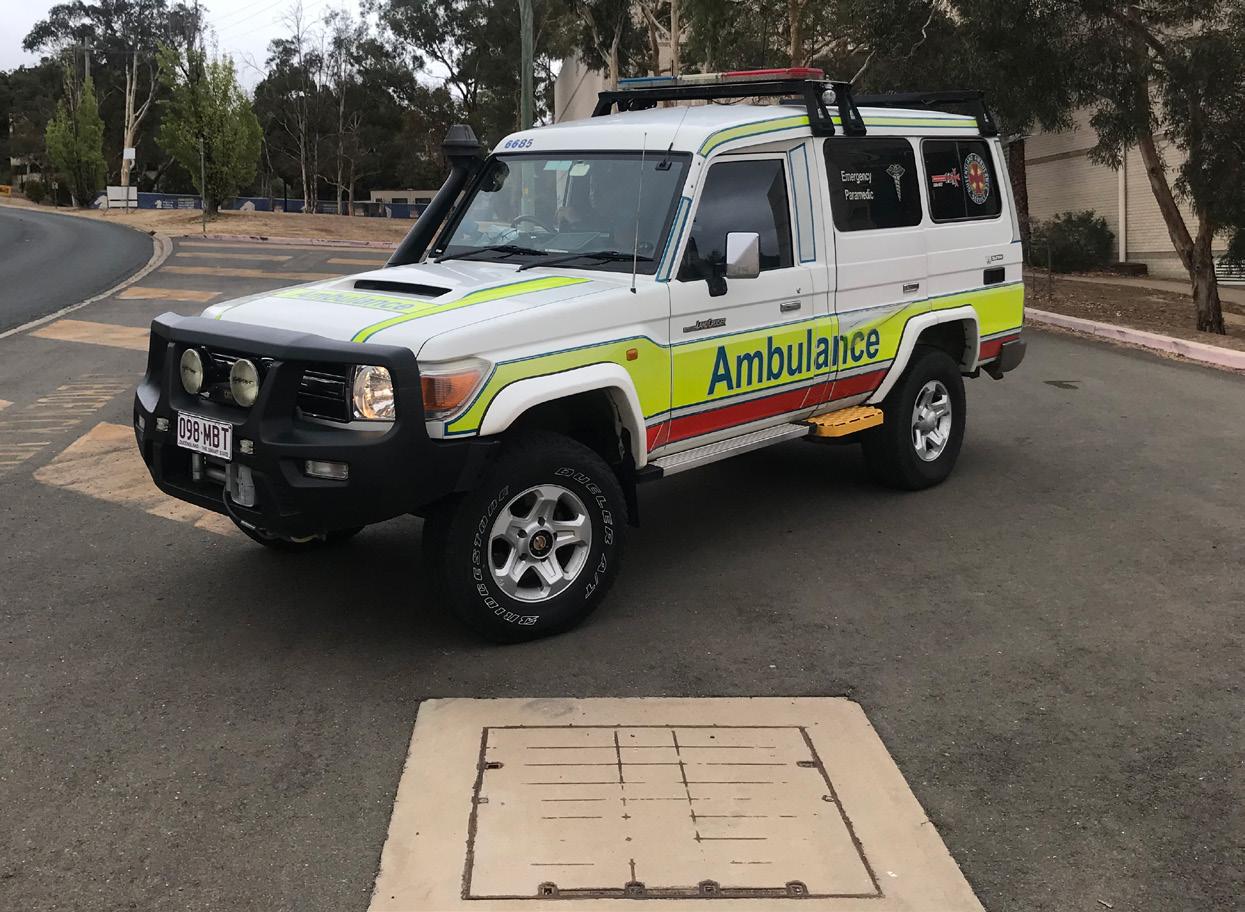
The ACT Ambulance Service confirmed that one night only four stretcher-equipped ambulances were on duty in Canberra—less than half the ideal number.
CHIEF OFFICER DAVID DUTTON SAID that between 2:00am and 6:30am, there were four transport ambulances and three Single Response Units (SRUs) on duty. SRUs are staffed by Intensive Care Paramedics who attend emergencies and determine whether a stretcher ambulance is required.
Transport Workers Union (TWU) official Ben Sweaney said the incident was symptomatic of deeper, ongoing issues within the service.
“What we saw was an Ambulance Service on life support,” Mr Sweaney said.
He said staffing levels remain under significant pressure, with many shifts operating below safe levels.
“With nine stations, you’d ideally want a crew at each one, plus a northside and southside SRU,” he said. “At the moment, staffing is right on the edge. There’s a lot of pressure on the roster, a lot of sickness, and it’s happening far too often.”
Sweaney said the shortage of available crews is being made worse by the way resources are managed day-to-day.
“What we see every day is that when members transition to leave or act up in higher duties, road staff are used to backfill those positions — meaning the operational roster continually runs short,” he said.
He added that the reduced coverage left crews working extremely hard to keep up with demand.
“There was a lot of good luck and a lot of goodwill from members out there providing that service,” he said. “They were pushed to the bone, and we were fortunate nothing major occurred.”
Chief Officer Dutton described the overnight period as “challenging” for both on-road and communications centre staff but said it was not entirely accurate to claim that only four ambulances were available.
“We actually had seven ambulance resources covering Canberra,” he said. “That includes three SRUs and staff in our communications centre, where a paramedic or intensive care paramedic provides virtual support to patients and crews.”
He said the lower numbers were partly the result of short-notice sick leave.
“When there are fewer resources, everyone who is at work ends up working a little bit harder,” Mr Dutton said.
The service expects the pressure to ease slightly in the coming weeks, with around a dozen graduate paramedics set to begin work soon and ten qualified paramedics from interstate due to join the service in the near future.
Mr Dutton said the issues facing the ACT Ambulance Service are being mirrored across other jurisdictions.
“These challenges aren’t unique to Canberra,” he said. “We’re a growing city with a growing population, and our service will need to expand to maintain the standards of care the community expects.”
He added that despite the difficulties, the ACT continues to record some of the best emergency response times in Australia — something he attributed to the dedication of frontline paramedics.




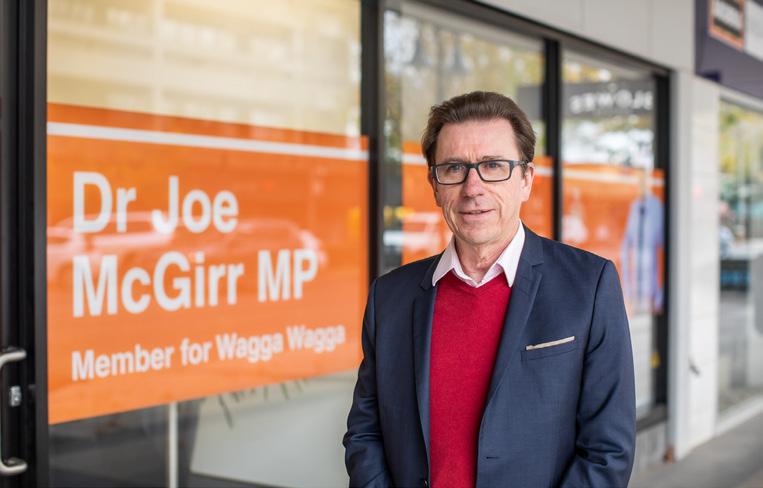






www.davidsmith.org.au


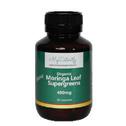

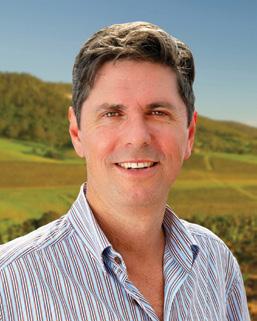


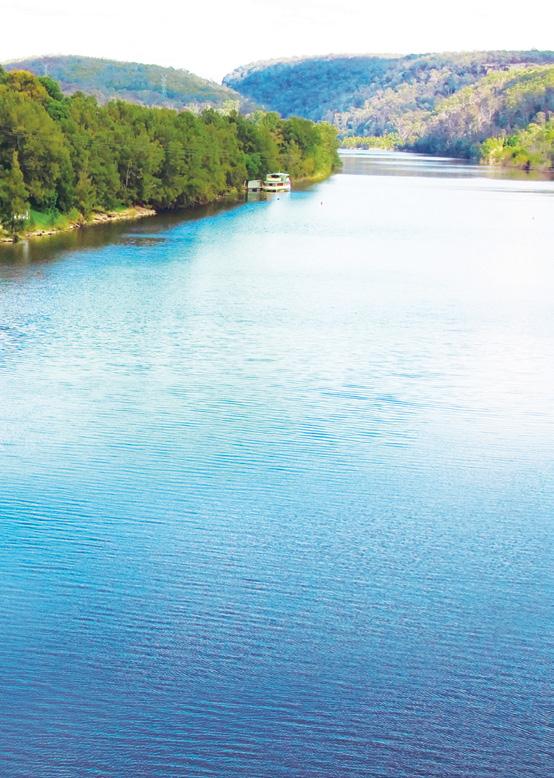



The
Health Services Union (HSU) has raised concerns over growing pressure on Illawarra hospitals after one of the region’s specialist paramedic vehicles was taken off the road for repairs.
THE EXTENDED CARE PARAMEDIC (ECP) unit — staffed by advanced paramedics who treat patients in the community — is expected to be out of service for several weeks following a recent collision. The HSU says the vehicle has not been replaced, leaving only one ECP unit to cover the region.
A HSU spokesperson said the temporary loss will likely lead to more patients being taken to hospital emergency departments instead of being treated at home.
“Extended Care Paramedics play a crucial role in easing the burden on local hospitals by managing nonurgent cases on scene,”
the spokesperson said. “When one of these vehicles is sidelined and not replaced, that safety valve disappears.”
The union says specialist vehicles like ECP units help reduce ambulance ramping and overcrowding in emergency departments by handling cases that don’t require hospital admission.
“Every day these paramedics prevent multiple unnecessary hospital visits,” the spokesperson said. “Without them, hospitals and frontline crews both feel the impact.”
Recent data from the Bureau of Health Information shows patients in the Illawarra face some of the longest
emergency department waits in regional NSW, with average stays exceeding four hours at Wollongong Hospital.
The HSU is calling on NSW Ambulance to deploy a replacement vehicle or additional resources until the damaged ECP unit is back in service.
“This isn’t about convenience — it’s about patient care and system efficiency,” the spokesperson said. “We can’t afford to have these specialist roles sitting idle while hospitals are under this much strain.”
A NSW Ambulance spokesperson said the service continues to operate a diverse fleet capable of responding to all types of emergencies.
NSWA members have been updated on the latest industrial action from the ADHSU Metro Duty Officer Managers (DOMs), who have expanded their bans in response to long-standing concerns about unsustainable workloads and unfilled rosters.
FOR YEARS, DOMS — LIKE THEIR colleagues in VCCC, Control, and onroad teams — have been advocating for stable rosters and adequate staffing levels. Union representatives say the extreme workloads placed on DOMs are already excessive when rosters are fully staffed, and become even more unmanageable when executive decisions leave unplanned vacancies unfilled under the banner of “fiscal responsibility.”
The NSW Ambulance Executive previously proposed a “Front Line Leadership” model, aimed at providing additional relief for DOMs. However, the union says that if implemented in its current form, the model would reduce the front-line leadership presence, rather than strengthen it.
The expanded industrial action is intended to allow Metro DOMs to focus on the core responsibilities of their role: ensuring the safety of paramedics and,
by extension, patients. It also seeks to address the unsustainable burden placed on individual DOMs who are left covering gaps whenever the Executive makes shift-by-shift decisions about whether to fill vacancies.
ADHSU representatives emphasise that operational managers are not the issue. The union says the executive’s approach to staffing is the root cause of the problem. A meeting between representatives of DOMs and operational managers is scheduled as early as Monday, with the aim of finding solutions — including better management of tools like the duty phone — so that operational teams are not left under-resourced due to budgetary decisions.
The union stresses that these measures are about ensuring workplace safety, protecting frontline staff, and supporting the vital work of NSW Ambulance paramedics.


EXTRA LOADS FOR REMAINING DOMS
Fewer managers are left to cover multiple regions and shifts, stretching capacity thin.
LEADERSHIP PRESENCE REDUCED
With fewer DOMs on duty, frontline teams lose vital guidance and oversight.
SAFETY AND BURNOUT RISKS RISE
Paramedics are left with less direction, slower response to issues, and increased stress.
SUPPORT FOR PARAMEDICS DECLINES
The pressure on both DOMs and crews grows — increasing fatigue, burnout, and safety concerns.

Union Claims Child’s Emergency Response Downgraded at St John NT.
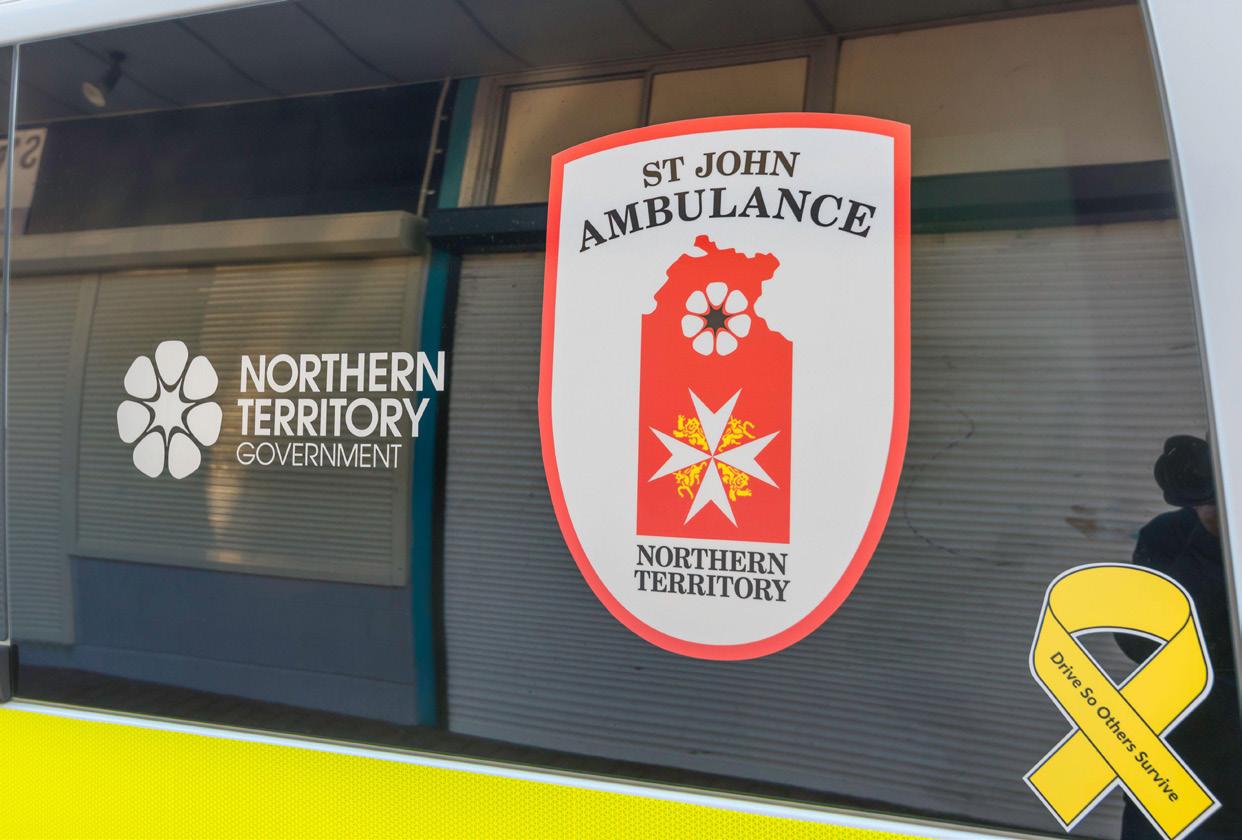
THE UNITED WORKERS UNION (UWU) has raised concerns after a 10-year-old child died in an Alice Springs home last month, alleging St John Ambulance NT downgraded the emergency response from a priority one to a lowerpriority call. The ambulance service has rejected this claim, saying the response was appropriate.
According to a whistleblower who spoke to the NT Independent on condition of anonymity, the child’s family called 000 reporting seizures. The call was initially treated as a priority one emergency, requiring the fastest response with lights and sirens. The source claims the case was then downgraded to priority two, meaning the ambulance responded at normal road speed — delaying critical care.
“Why would you downgrade a 10-yearold having a seizure? That’s a huge risk,” the whistleblower said.
“Because of the downgrade, if another priority one call came in, crews could be diverted off the child’s case. This should never happen — especially with children.”
UWU NT secretary Erina Early said the downgrade caused a significant delay in care for a critically vulnerable patient.
“St John downgraded the call from a priority one to priority two as the child
had ceased seizing. This is St John’s position,” she said.
St John NT’s Jeanette Button, strategy, brand and engagement director, said the ambulance arrived within 12 minutes and was staffed by paramedics and an intensive care paramedic.
“We offer our condolences to the family. The case is being prepared for the coroner, and the cause of death will be subject to autopsy,” Ms Button said.
Ms Early also told the NT News that paramedics are being forced to take breaks to avoid financial penalties, rather than for fatigue management.
“Life-threatening priority one calls are routinely delayed. It’s not about fatigue — it’s about avoiding doublepay costs,” she said.
St John Ambulance CEO Andrew Tombs said the organisation has paid $750,000 in penalties for missed breaks but stressed patient safety remains the priority.
“The most serious cases will always be responded to immediately. Changes in dispatch over the past 18 months are designed to support staff and allow rest periods,” he said.
The whistleblower added that downgrading emergencies to reduce overtime and meal penalties has become routine, with serious consequences for patients, staff, and public trust.
“This has now cost a life and will continue to affect patients’ morbidity and mortality,” the source said.
“If reported to the Australian Health Practitioner Regulation Agency, these actions could result in suspension or deregistration.”
The case follows previous scrutiny of St John NT, including a 2021 police investigation into the death of a 34-yearold Indigenous man, and the Ellis review of the service’s clinical governance.
The review found multiple treatment failures, poor decision-making, and a breakdown of trust between ambulance crews and hospitals. Staff reported being intimidated or silenced to protect
St John’s reputation.
The union says the latest incident highlights systemic problems in management, staffing, and emergency response priorities.

The United Workers Union (UWU) has raised serious concerns about ambulance operations in the Northern Territory, warning that lives could be at risk as paramedics are reportedly required to take breaks while critical incidents go unanswered.
THE UNION CLAIMS THAT ST JOHN NT is enforcing scheduled breaks primarily to avoid financial penalties, rather than for fatigue management, leaving crews unable to respond immediately to lifethreatening calls.
According to UWU Secretary Erina Early, paramedics have reported that priority one cases are sometimes delayed under the current system. Crews face penalties if they miss mandatory breaks, which can result in double pay for the service, creating pressure to pause even when urgent patients need assistance.
Union representatives have highlighted that this practice places additional strain on paramedics and emergency departments, particularly in remote and high-demand areas. One key concern is that critical jobs are being held while staff are forced to take breaks, rather than allowing experienced crews to respond immediately.
Recent data shows that St John NT generally performs well, with half of priority one calls in Darwin responded to within 13.4 minutes. However, when looking at 90 percent of cases, average response times extend to more than 30 minutes — among the longest in Australia outside Tasmania and South Australia.
St John NT maintains that patient safety remains a top priority and that all serious cases are attended to as quickly as possible. The service has also implemented dispatch and workflow changes aimed at supporting staff to complete shifts safely while taking scheduled breaks.
The union continues to call for better staffing and resourcing to ensure paramedics can take necessary breaks without delaying critical care, emphasising that adequate support is essential for both patient safety and frontline worker wellbeing.
MIN 30+
90th percentile: almost all calls answered within this time
MIN 13.4
Median response: half of P1 calls answered in this time


Research from Black Dog Institute has revealed that global rates of PTSD among first responders are at record highs, with around 12% of paramedics affected as a result of routine duties. Now more than ever, evidence-based support is needed to help first responders recover and thrive.
Global rates of post-traumatic stress disorder (PTSD) among emergency service workers are now higher than ever before, according to a landmark new study from Black Dog Institute. Called ‘Global PTSD prevalence among active first responders and trends over recent years: A systematic review and metaanalysis’, the study provides the most comprehensive snapshot to date of first responder PTSD between 2008 and now.
The research shows that around 14% of all first responders have probable PTSD as a result of routine duties, a figure substantially higher than previous estimates of 10%. Around 8% have probable PTSD specifically related to responding to disasters. Among paramedics, those figures are 12% and 8% respectively.
PTSD is a mental health condition that develops in response to experiencing or witnessing a traumatic event. It is diagnosed based on of four types of symptoms that last for over a month. These include intrusive symptoms (e.g., involuntary and distressing memories, nightmares or flashbacks), avoidance of reminders of the event, negative changes in thoughts and feelings about yourself or the world, and feeling hyper-alert (e.g., easy to anger or startle, difficulty sleeping).
Among first responders, PTSD is associated not only with serious impacts on quality of life but also high levels of burnout and incapacity that can deplete this vital workforce.
“One of the most concerning findings is that rates of PTSD have worsened for a majority of first responders, despite significant international investment into the occupational mental health of this population,” says Dr Andrew Arena, a postdoctoral research fellow at Black Dog Institute and the study’s lead author.

Previous research from Black Dog Institute and other organisations has identified trauma-focused cognitive behavioural therapy (TF-CBT) and eye movement desensitisation and reprocessing (EMDR) as the gold-standard treatments for first responder populations.
At Black Dog Institute’s National Emergency Worker Support Service, clinicians have delivered gold-standard treatment specifically designed to meet the unique needs of first responders, including EMS personnel. This approach has achieved long-term PTSD recovery rates of 70–80%, a figure double the recovery rates of some other specialised treatments.
However, despite the success of this approach, similar treatments are not broadly available. As an international leader in the field of first responder mental health, Black Dog Institute is now calling for improved access to evidence-based care for first responder communities.
“Right now, the mental health services available to this vital community are stretched very thin,” says Dr Arena.
“There is an urgent need to increase the availability of evidence-based support that can reduce trauma–related harm among these essential workers.”
Failing to deliver this support risks worsening the mental health outlook of first responders globally. According to Dr Arena, these professionals are already grappling with ongoing stigma around help-seeking, as well as the impacts of accumulated stress resulting from the COVID-19 pandemic and increasing natural disasters.
Black Dog Institute’s world-leading work in first responder mental health also has implications for global policy, providing important insights into how other countries can start adopting similar treatment PTSD approaches. This is particularly important in lowand middle-income countries where first responders are more vulnerable to PTSD.
First responder mental health remains a pressing global issue, and Black Dog Institute remains focused on research and innovation that makes a difference to this vital population. Connecting first responders to traumainformed, evidence-based care matters not only for individuals but for their employers, colleagues, friends, families and the broader community.
“The public relies on first responders during times of crisis. We need to make sure they have access to the support they need, so that in turn, they can continue to support the communities they serve,” Dr Arena says.

Calls for Hato Hone St John to be legally recognised and fully funded amid growing demand.
“KAITĀIA HAS A SINGLE AMBULANCE CREWED AT NIGHT, AND WHEN IT IS CALLED OUT, THE NEXT AVAILABLE AMBULANCE MUST
FROM KAIKOHE OR KERIKERI. “
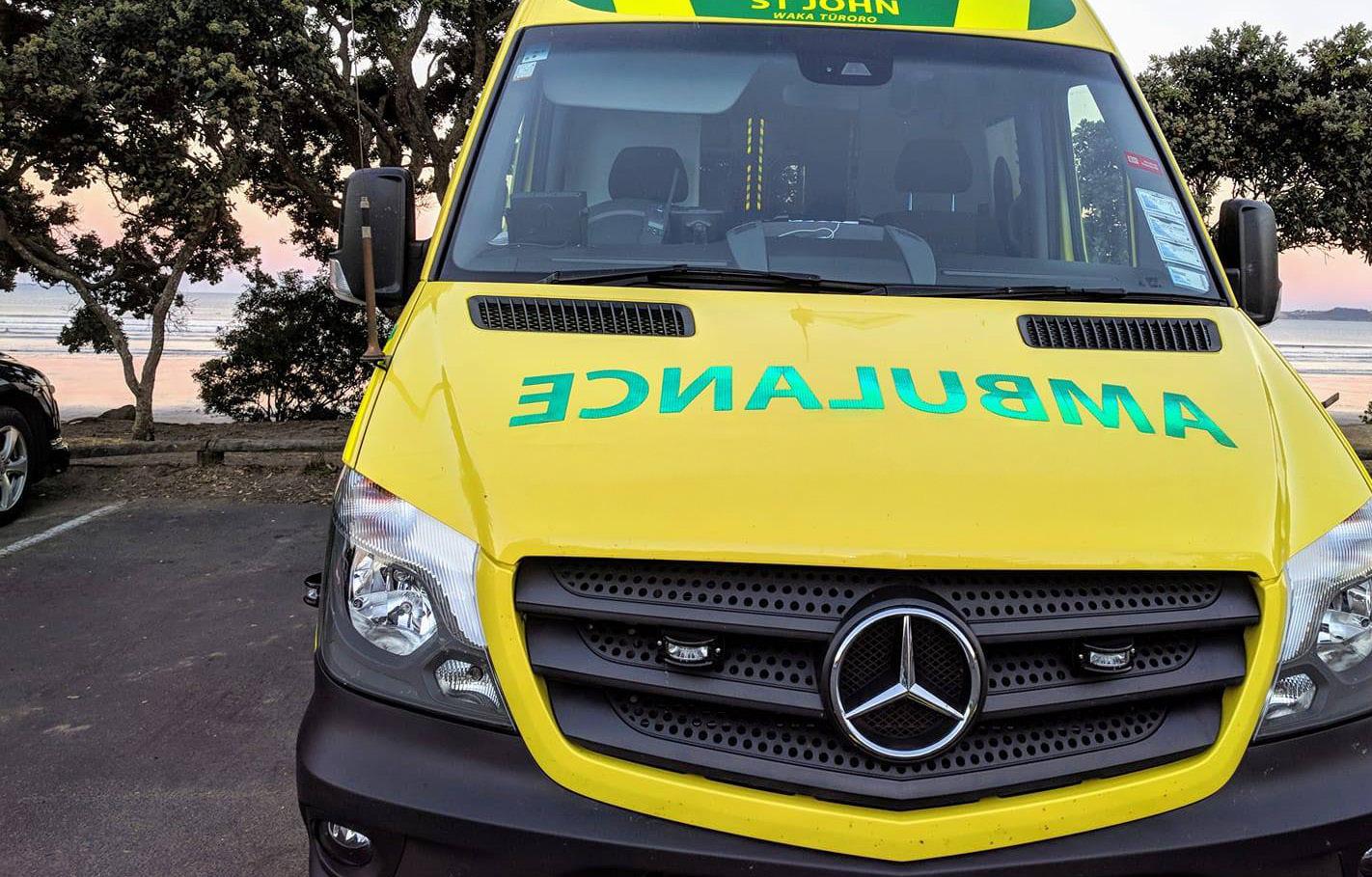
HATO HONE ST JOHN HAS JUST experienced its busiest winter on record as demand for ambulance care continues to grow across a wider range of issues. The pressure on the system has reignited concerns about service coverage in the Far North, where towns such as Kaitāia operate with only one ambulance overnight.
Workers First Union national ambulance co-ordinator Faye McCann said Kaitāia has a single ambulance crewed at night, and when it is called out, the next available ambulance must travel from Kaikohe or Kerikeri. She said ambulances are often pulled from smaller communities to cover callouts in larger, more populated areas, leaving rural regions exposed.
“There is more likely to be a job in Whangārei than there is in Kawakawa, [but] that takes from the rural communities,” McCann said.
Her comments follow a New Zealand Medical Journal editorial noting that Hato Hone St John is not legally recognised in statute as a government emergency service, despite rising demand and increasingly complex workloads.
The editorial stated that demand was growing due to an ageing population, chronic illness, the mental health crisis, and pressure on hospital systems. In August alone, Hato Hone St John responded to more than 50,000 ambulance
incidents — the highest monthly total ever recorded. Of those, 3529 were in Northland.
According to the Journal, rural regions experienced longer response times and relied more heavily on first responders, creating stark differences in available care across districts.
McCann believes fully funding Hato Hone St John and recognising it as an essential emergency service would help close those gaps.
Hato Hone St John deputy chief executive for ambulance operations
Dan Ohs said the organisation is advocating for improved funding and for formal recognition as an emergency service in the forthcoming Emergency Management Bill.
Ohs said the service was seeing demand rise in key areas, including a 1.8% increase in mental-health-related callouts last year. Northland’s geography, population spread, and road network also created unique operational challenges.
He said deployment decisions were based on the severity of a patient’s condition, available resources, and demand — not the size of the community. At times, this meant the nearest available ambulance might come from Kaikohe or Kerikeri.
“We understand that this can sometimes be perceived as drawing resources away
from smaller towns, but the intent is to balance overall coverage,” Ohs said.
Repositioning ambulances across districts to manage workload is standard practice internationally, he added.
The Medical Journal also noted that ambulance officers are increasingly performing more complex procedures, and lessqualified officers must request permission to perform certain tasks under strict guidelines.
McCann said every ambulance should have a qualified paramedic on board.
Ohs acknowledged this was an aspirational goal but said it was not always achievable, particularly in rural regions where recruitment and training take time. Paramedics are increasingly being utilised in non-ambulance settings such as urgent care clinics and rural health services, which strengthens the wider health system without changing the core nature of their work.
St John is also advocating for improved infrastructure and station facilities, with the current emergency ambulance contract set to expire in June 2026. The organisation wants reduced fundraising requirements, better support for rural volunteers, and improved resourcing.
Ohs said formal recognition in the Emergency Management Bill would ensure the ambulance sector is included in emergency planning and decisionmaking, strengthening collaboration and coordination.

The Queensland Government and the United Workers Union (UWU) have reached an in-principle agreement on a new certified agreement for the state’s ambulance officers, delivering wage growth and enhanced conditions for paramedics and operational staff.
THE AGREEMENT, WAGES WILL increase by a guaranteed 8% over three years (3%, 2.5%, 2.5%), with additional increases possible through a CPI Uplift Adjustment if triggered. The agreement also includes targeted allowances to attract, retain, and recognise paramedics and other operational employees in rural and remote areas, as well as rewards for staff working unsociable night shifts.
Queensland Ambulance Service (QAS) Commissioner Craig Emery said the constructive bargaining process demonstrated alignment between all parties in supporting frontline staff.
“We are pleased to present an offer that has the support of the United Workers Union and its members. Drafting of the new agreement has already begun to ensure wage rises and other improvements are delivered as quickly as possible,” Commissioner Emery said.
“Our Paramedics, Patient Transport Officers, and Emergency Medical Dispatchers are working tirelessly to meet healthcare demands across Queensland. Securing a certified agreement with a strong focus onstaff wellbeing and safety was a priority for both QAS and the UWU, and we thank the union for their collaborative approach in reaching this inprinciple agreement.”
UWU Ambulance Coordinator Fiona Scalon said the agreement followed a member survey confirming strong support for the offer.
“Members’ voices have been central throughout this process—from shaping claims to presenting arguments at the bargaining table and in meetings with the Minister for Health and Ambulance,” Ms Scalon said.
“We are pleased to reach an in-principle agreement that recognises the critical
work of ambulance staff and provides commitments to better support them.”
Minister for Health and Ambulance Services Tim Nicholls commended both QAS and the UWU for negotiating in good faith to achieve an outcome benefiting all staff.
“This agreement delivers better outcomes for our hardworking paramedics, Patient Transport Officers who ensure safe transfers between facilities and home, and our Triple Zero Emergency Medical Dispatchers,” Minister Nicholls said.
“The Crisafulli Government is committed to delivering health services when Queenslanders need them, with more ambulances on the road sooner and reduced ambulance ramping through the fully-funded Hospital Rescue Plan. The Queensland Ambulance Service truly reflects the spirit of our State, and we remain committed to supporting our frontline first responders.”

8% guaranteed wage growth over three years, with extra increases possible through CPI Uplift. Part of the new in-principle agreement between QAS and UWU.
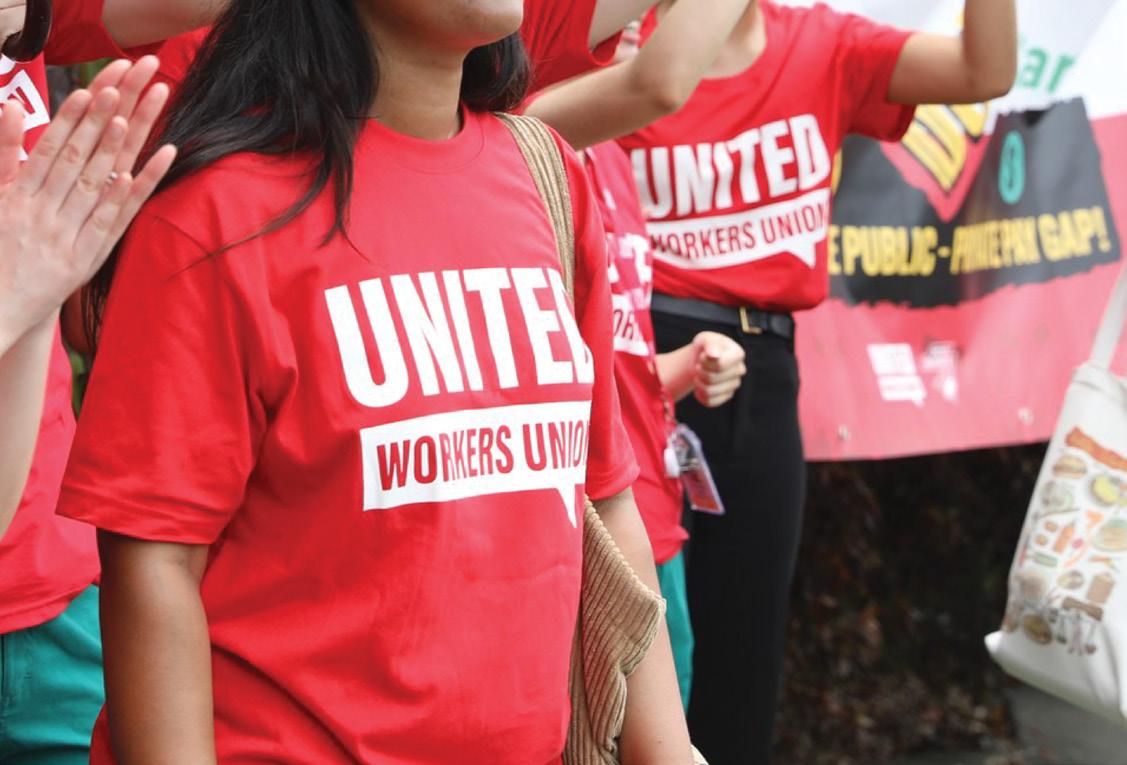
“MEMBERS’ VOICES HAVE BEEN CENTRAL THROUGHOUT THIS PROCESS”

QUEENSLAND PARAMEDICS WORKING exhausting shifts of up to 21 hours could vote to take industrial action from Monday as negotiations on pay and conditions remain unresolved.
The United Workers Union (UWU), which represents Queensland Ambulance Service staff, is pushing for a fair end-of-shift framework to ensure fresh crews can replace paramedics who have been stuck for hours at hospital emergency departments.
Queensland Ambulance data shows around 80% of the workforce regularly works overtime, often exceeding 12-hour shifts to meet rising demand. Many paramedics report extreme burnout and stress due to these unsustainable hours.
UWU has been negotiating with Queensland Health since May but has yet to reach an agreement. While paramedics are generally satisfied with the wage offer, they are seeking certainty that they can finish their shifts on time by introducing stronger conditions into their agreement.
UWU ambulance coordinator Fiona Scalon said introducing end-of-shift measures would help paramedics safely return home rather than exhausting themselves at hospital ED ramps.
“We’ve reached the point where crews can’t safely approve work beyond what’s funded. End-of-shift measures are essential for the safety of both paramedics and patients,” she said.
The planned industrial action is protected and will not compromise patient
safety. Initial steps will include a messaging campaign, with paramedics signing an open letter to the Queensland Health Minister to highlight their concerns.
One paramedic described the situation as reaching a breaking point:
“We’re regularly working beyond our rostered hours. We’re missing crucial rest, time with our families, and the ability to care for our own health. It also impacts patient care—no one wants a paramedic on their 13th hour of work attending to them.”
UWU says the action is intended to secure meaningful reforms that protect paramedics from dangerous overwork while ensuring Queenslanders continue to receive safe and effective ambulance services.
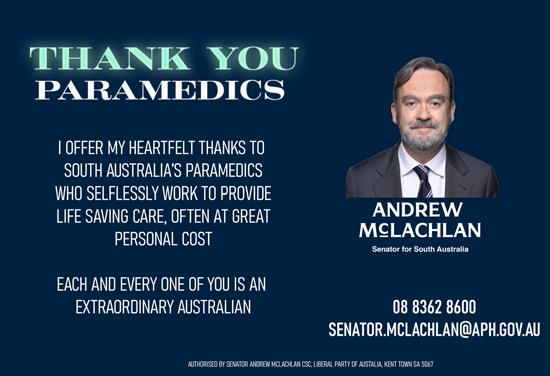




•
•
• Treatment with experienced clinical psychologist
• Evidence based psychological treatment
• Locations: Online, Westmead, Randwick
• Over 20 years experience
•
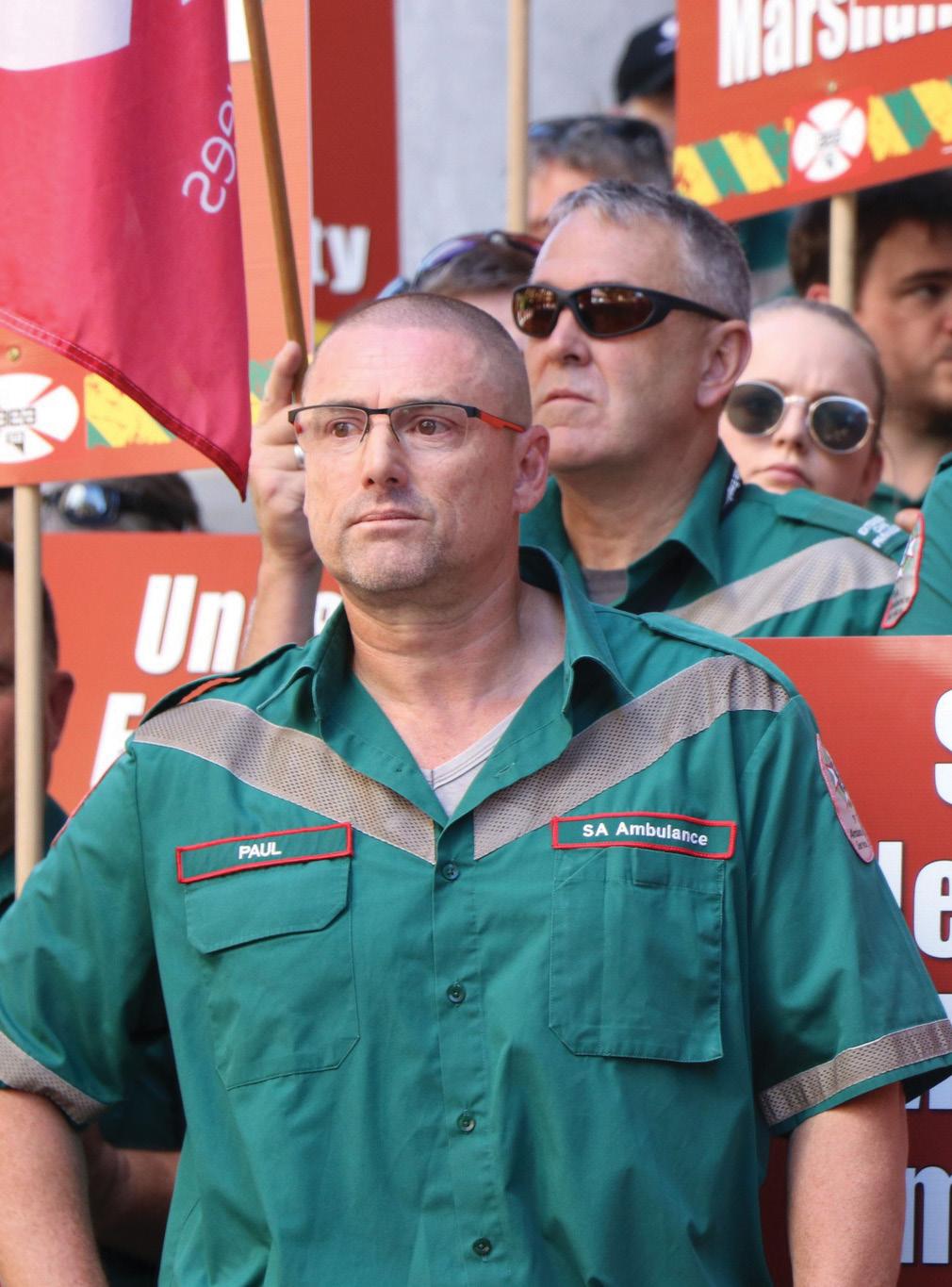
did not hold back.
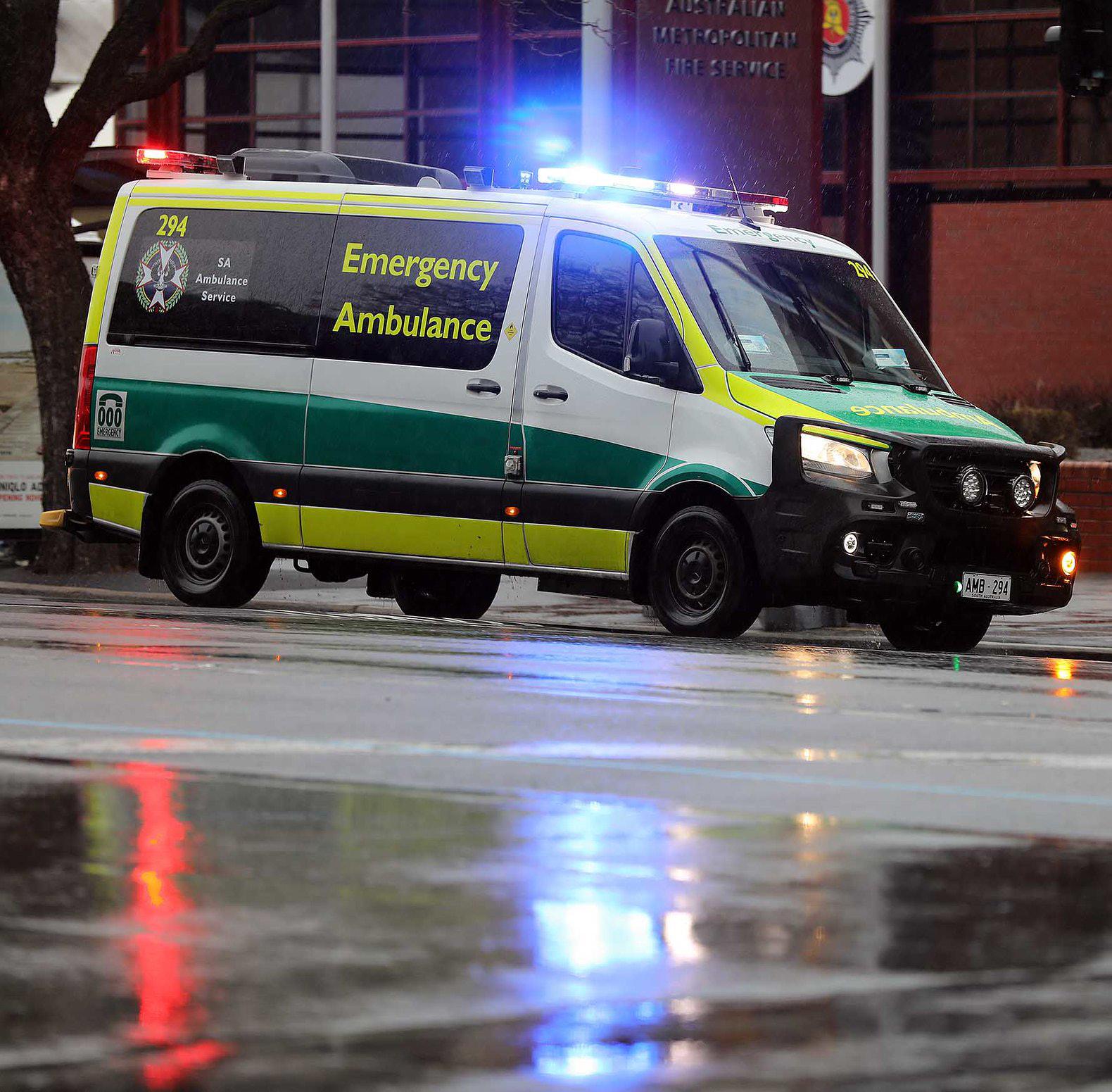
THREE-AND-A-HALF YEARS AFTER Labor was elected on a promise to fix ambulance ramping, the AEA is warning that the situation is worsening and urgent action is needed.
“In July 2025, ambulances spent a staggering 5,866 hours waiting in hospital car parks,” Ekkelboom said. “That’s a more than 60% increase compared to July 2022, just four months after the government took office. Some of our paramedics are spending their entire 12-hour shifts on a single ramped patient, unable to respond to other emergencies. This is putting lives at risk every day.”
Ekkelboom said the ongoing crisis is taking a serious toll on frontline paramedics. “Our members are exhausted, facing fatigue, sickness, and burnout, yet they continue to serve the community. They deserve support, not delays. Urgent measures are required to relieve pressure on staff and improve response times for the public.”
The AEA has long been a prominent voice on ambulance ramping. In the leadup to the 2022 election, the union helped
to highlight the human impact of delays on patients and the toll on paramedics. Individual members became highly visible advocates, bringing attention to real cases and warning voters that fixing ramping was a critical issue.
Following the election, the union has continued to monitor the situation closely. Ekkelboom said: “The government campaigned on a commitment to fix ramping. Yet three and a half years later, the crisis continues and, in some areas, has worsened. Ambulances are still tied up for hours, meaning vital responses are delayed. This must change.”
The union has also emphasised the broader consequences for public safety. “When paramedics are stuck on hospital ramps, fewer ambulances are available to respond to emergencies across the state. Our community depends on timely ambulance care, and ongoing delays put lives at risk,” Ekkelboom said.
Ekkelboom was appointed union secretary last year after pledging to strengthen the AEA’s political
independence and take a firmer stance on ramping. Since then, he has been outspoken on the need for better resourcing, staffing, and systemic fixes.
“Our message to the government is clear: ramping is a crisis, and paramedics need support to do their jobs effectively,” he said.
While public attention on ramping has fluctuated, Ekkelboom stressed that the union’s advocacy is unwavering.
“Paramedics are committed to saving lives, but they cannot do it alone.
The government must act to ensure ambulances are available, patients receive timely care, and our members are protected from the ongoing pressures of this crisis,” he said.
As South Australia heads toward the 2026 election, the AEA continues to hold the government accountable, using its public voice to push for meaningful solutions. Ekkelboom concluded:
“We will keep speaking up for our members and the community until real change is delivered. Every delay we allow is a risk to someone’s life.”
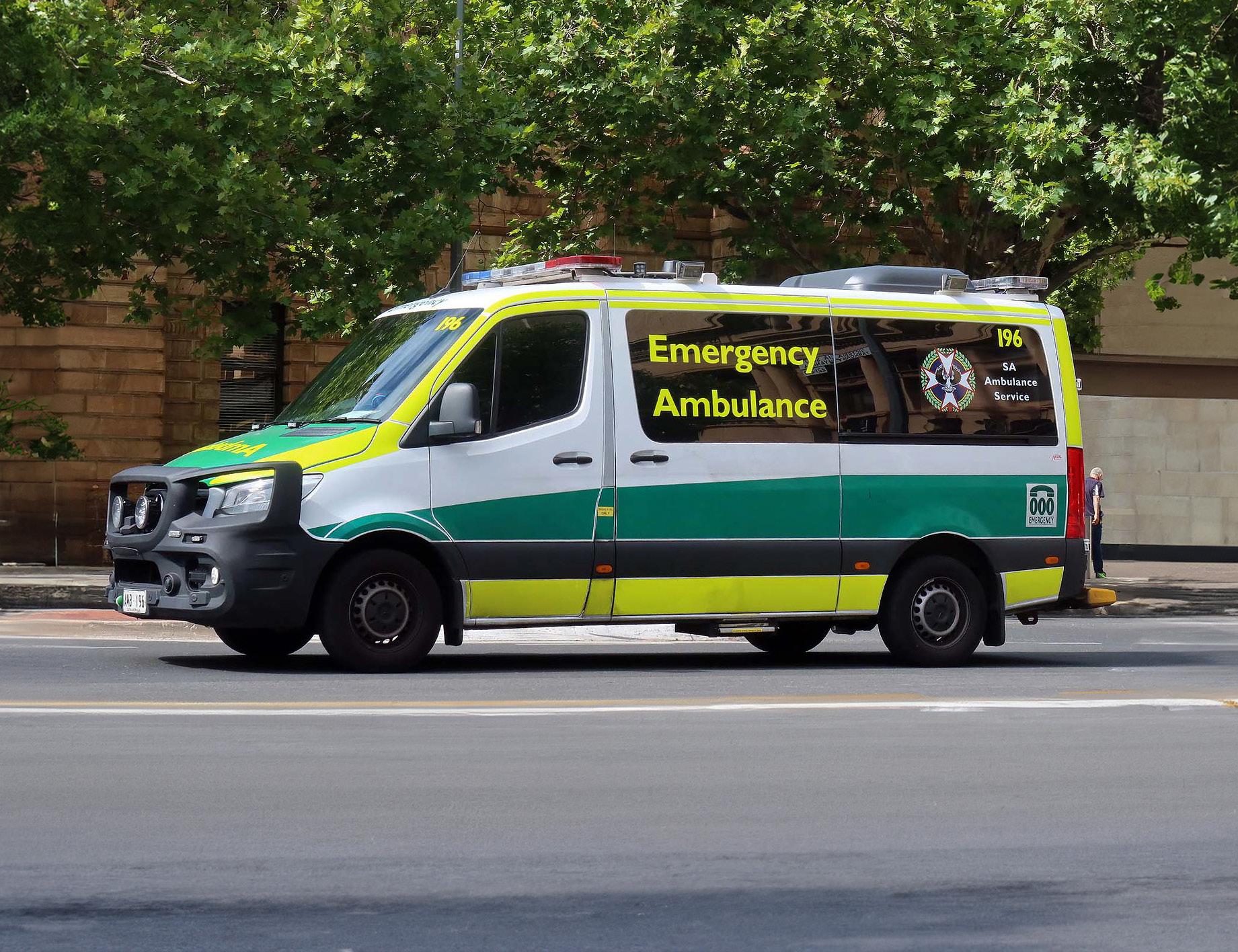
The Ambulance Employees Association (AEA) has written to South Australian Health Minister Chris Picton, warning that the closure of Mount Gambier’s Urgent Care Clinic has created a growing health crisis for the Limestone Coast community.
SINCE THE CLINIC’S CLOSURE IN JUNE 2025, residents have been left with few options beyond the Mount Gambier Hospital Emergency Department or attempting to secure one of the increasingly scarce GP appointments. Currently, no GP clinics in the region are accepting new patients.
AEA members say the fallout has been swift and severe — for both patients and ambulance crews.
“Without timely access to primary care, patients will get sicker before they can get help,” the AEA warned.
PARAMEDICS UNDER PRESSURE
Local ambulance crews report a sharp increase in callouts and hospital presentations since the closure, with patients often presenting at the Emergency Department for conditions that should have been managed in a primary care setting.
The Association says the lack of accessible healthcare has led to:
Rising ambulance call volumes and increased pressure on local crews
Prolonged ramping and delays in transfer of care, even for urgent cases such as chest pain
Patients deteriorating post-discharge, unable to access GP follow-up or outpatient services
“These issues are placing additional strain on an already struggling health system and contributing to poorer patient outcomes,” the letter states.
RESPONSE NOT ENOUGH
The State Government’s announcement of six new Emergency Department beds at Mount Gambier Hospital has been acknowledged by the AEA, but the Association warns that this extra capacity will be quickly overwhelmed by demand.
“We fear that if the situation in Mount Gambier is left any longer without meaningful intervention, it’s only a matter of time before there are poorer patient outcomes and insurmountable long-term repercussions for the region.”
The AEA has urged both state and federal governments to act urgently to restore and expand primary and alternative care services for the Mount Gambier region.
The Association has specifically requested government funding for new primary care and urgent care facilities to relieve pressure on ambulance crews and the hospital system.
“Regional communities deserve access to quality healthcare that meets their needs,” the AEA said. “This is not just about convenience — it’s about safety and patient outcomes.”
This infographic highlights the dramatic change in healthcare access for the Mount Gambier community following the closure of the Urgent Care Clinic in June 2025.
Urgent Care Clinic open
GP appointments available
ED visits manageable
AFTER JUNE 2025
Clinic closed
No GP clinics accepting new patients
Rising ambulance callouts
ED overcrowding
Following the AEA’s advocacy the Federal Health Minister announced in October that a new provider has been selected for the Mount Gambier Medicare Urgent Care Clinic, which is welcome news to the AEA and the Mount Gambier community. However, no firm date has been set only that the clinic would re-open within the ‘coming months’ after building works are completed.

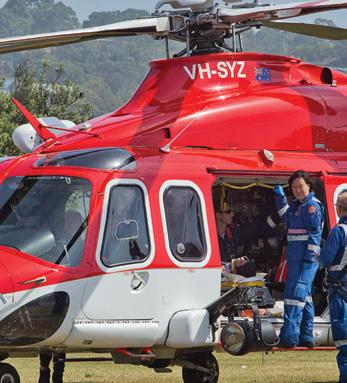

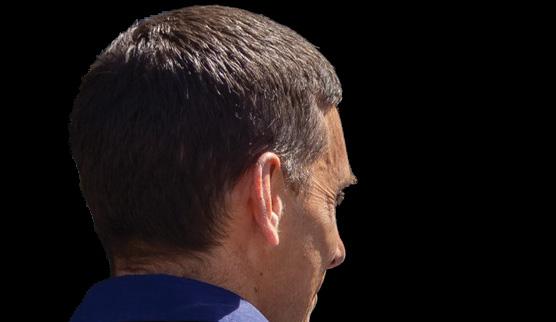

Tasmanian paramedics, represented by the Health and Community Services Union (HACSU), have taken industrial action following the state government’s decision to back away from a previously agreed pay deal for specialist roles.
Paramedics, Police Ambulance Clinician Early Response, and Secondary Triage Paramedics, many of whom have worked for years in these roles without additional pay to reflect the higher level of skill and responsibility required. An agreement reached in April 2025 had promised to rectify this with backpay, but at the last moment, the government moved to abandon the deal.
HACSU State Secretary Robbie Moore said, “This is unprecedented. We have never seen a government walk away from an agreement with its own paramedics. This decision is entirely the responsibility of the Rockliff government— not Ambulance Tasmania or the Department of Health.”
In response, HACSU’s Ambulance Executive passed a resolution to suspend any participation in the rollout or expansion of Integrated Care programs across Tasmania, including the extension of Community Paramedic services into rural areas, except where required by an employee’s current role.
“The HACSU Ambulance Employees Sub-Branch Executive is deeply disappointed by the broken trust between the Tasmanian government and its paramedic workforce,” the resolution stated. “Our members save lives every day under challenging circumstances. To be betrayed by the very government that relies on our work is a devastating blow. When agreements are made, they must be honoured.”
HACSU members expressed strong frustration at the government’s refusal to confirm whether backpay would be provided. Jan Pur, a paramedic and HACSU Ambulance Executive member, said, “This is one of the most insulting moments I have seen in my career. Our work supports programs the government relies on, yet they refuse to honour an agreement. It is a clear disregard for the contribution of our workforce.”
The government had originally created these specialist programs in response to hospital ramping challenges, promising that salaries would reflect the responsibilities
of each role. Interim arrangements had been set up to provide backpay, with figures due to be communicated to employees by the end of August. Delays in confirming this commitment have left paramedics uncertain about their rightful compensation.
Moore added, “To ask paramedics to continue providing these critical services without proper recognition or pay is not only unfair—it undermines the programs that help keep Tasmanians safe. HACSU will continue to defend its members and hold the government accountable.”
Low-level industrial action has already begun across the specialist roles, with further measures under discussion. HACSU plans to meet with members in the coming week to determine the next steps should the government fail to honour the agreement.
HACSU’s actions highlight the essential role paramedics play in Tasmanian healthcare and underscore the union’s commitment to securing fair pay and working conditions for its members.
APRIL 2025
Agreement reached, backpay promised

MAY–JULY 2025
Figures due to be finalised
AUGUST 2025
Employees await backpay confirmation
SEPTEMBER 2025
Government walks away from deal
OCTOBER 2025
HACSU launches industrial action

“HACSU WILL CONTINUE TO DEFEND ITS MEMBERS AND HOLD THE
PARAMEDICS IN TASMANIA’S NORTH and north-west have been instructed to divert non-urgent patients away from North West Regional Hospital (NWRH) in Burnie, as the facility struggles to manage rising demand, according to the Health and Community Services Union (HACSU).
HACSU State Secretary Robbie Moore said ambulances are being directed to alternative hospitals in Latrobe and Launceston for non-emergency cases. “This means paramedics are travelling longer distances while still providing urgent care to patients. It’s a dangerous situation and highlights just how stretched our health system is,” Moore said. The union noted that the bypass is primarily driven by high staff absenteeism and increased patient numbers due to the influenza outbreak. “We simply do not have the capacity to manage surges in demand. Seeing a major hospital bypassed is unprecedented in Tasmania since the COVID-19 pandemic,” Moore added. Despite the diversion, patients experiencing life-threatening conditions, such as cardiac arrest or stroke, continue to be transported to the NWRH. “Paramedics remain committed
to delivering lifesaving care, but these stop-gap measures are not solutions. They put additional pressure on crews and lengthen response times across the region,” Moore said.
HACSU emphasised that the current bypass underscores systemic challenges within Tasmania’s health system. “This is not just about one hospital or one day. It demonstrates the urgent need for proper resourcing and staffing to ensure paramedics can respond safely and patients receive timely care,” Moore said.
While the Department of Health has stated that NWRH has established surge procedures and that non-urgent patients are being temporarily redirected, HACSU insists this is a short-term measure rather than a long-term fix. “We need sustainable solutions, not temporary workarounds. Paramedics are on the front line, and their safety and ability to provide care must be prioritised,” Moore said.
The union said it remains in close contact with members in the north-west and will continue monitoring the situation while advocating for stronger resourcing to prevent further strain on paramedics and the health system.


LAUNCESTON GENERAL HOSPITAL (Launceston)
NORTH WEST REGIONAL HOSPITAL (Burnie)
MERSEY COMMUNITY HOSPITAL (Latrobe)
Non-urgent patients redirected due to staff shortages and flu surge.
Life-threatening cases (stroke, cardiac arrest, etc.) still transported to Burnie.




Victoria’s ambulance service is “on life support” and in need of urgent reform, with a toxic workplace culture of bullying, harassment and gaslighting pushing paramedics to breaking point, a damning parliamentary inquiry has found.

A parliamentary inquiry into Ambulance Victoria has urged sweeping reform, warning the organisation is putting Victorian lives at risk and prompting an Ombudsman investigation into its conduct.
Tabling the report in parliament, committee chair Liberal MP Joe McCracken said, “Ambulance Victoria is in crisis, there is no other way to describe it.”
He described the service as plagued by “extensive and widespread dysfunction” and a toxic culture defined by nepotism, bullying, harassment and gaslighting.
“Fear and intimidation are used as tools for power and control,” he said.
According to the report, frequent CEO turnover had fuelled instability, the board lacked paramedicine experience, and performance targets were routinely missed. It also found ambulance ramping was leading to serious clinical harm, including deaths.
“The ambulance system in Victoria is on life support, and its patients and paramedics are bearing the brunt of an organisation that doesn’t appear to serve its purpose,” McCracken said.
The inquiry made 21 recommendations and outlined allegations that Ambulance Victoria had covered up deaths by failing to report them to Safer Care Victoria, despite mandatory requirements.
One witness told the committee such practices were “absolutely rife … it goes on all the time.”
Concerns were also raised about overtriaging in Triple-0 call-taking and dispatch, with evidence suggesting critically ill Victorians were left with delayed or no ambulance response.
The report found paramedics were being pushed to breaking point, with systemic failures across the hospital network — including bed shortages, delayed discharges and gaps in primary care — compounding structural problems within the service.
It concluded that “a toxic culture continues to thrive — marked by bullying, harassment, nepotism and reprisals against those who challenge authority.”
The committee also found complaints processes had been misused against staff, deepening distrust, and said governance failures were entrenched, making urgent cultural change essential.
The inquiry has prompted the Victorian Ombudsman to investigate two illegal funeral gatherings for former paramedics held during Covid lockdowns. Former chief executive Tony Walker reportedly approved the events, which featured guards of honour, a pipe and drums band and a helicopter flyover, despite strict curfews and a 10-person funeral limit.
Serving Ambulance Victoria director Danielle North is also expected to come under Ombudsman scrutiny after allegations she misled the parliamentary committee.
Victorian Ambulance Union secretary Danny Hill said the findings reflected long-standing issues raised by paramedics relating to staffing shortages, response delays and a culture of poor management.
“The report is damning. It’s time for action and tangible outcomes,” he said.
“The workforce wants to see an end to the scandals and a focus on bringing AV back to its core role of being an emergency service.”
Hill said paramedics were failing to meet response times in one out of every three cases, and that distrust of senior leadership had persisted for decades.
Shadow Health Minister Georgie Crozier said paramedics continued to save lives despite organisational dysfunction, and urged the government to act on the report.
Ambulance Victoria chief executive Jordan Emery said the organisation would take time to review the inquiry’s findings. He acknowledged the need to rebuild trust, strengthen governance and address cultural concerns.
“Improving staff experience, safety and wellbeing — and earning the trust of the community — will always be my priority,” Emery said.
He also noted there was no finding in the report suggesting Ambulance Victoria had failed to report sentinel events to Safer Care Victoria.


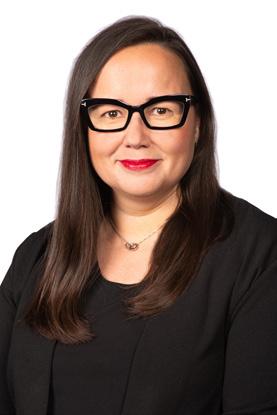















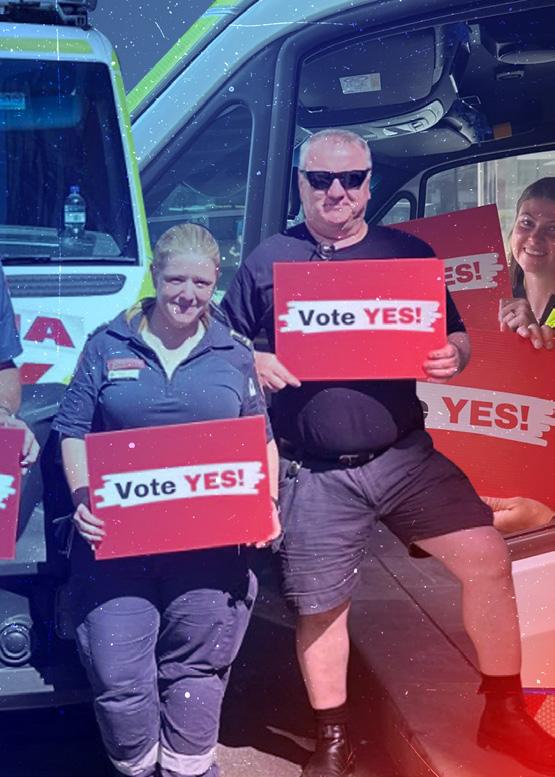
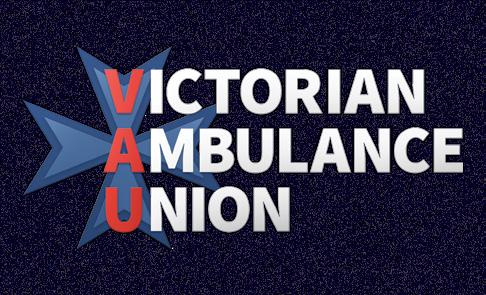


Paramedics in Geelong are being tied up responding to non-emergency cases, adding pressure to an already stretched system and delaying care for genuine emergencies, the Victorian Ambulance Union (VAU) says.
VAU HEAD DANNY HILL HIGHLIGHTED the growing concern that too many calls are being incorrectly categorised as Code 1—requiring an urgent lightsand-sirens response—when they are not true emergencies.
“It’s not uncommon to see a paramedic dispatched to someone who’s got sunburn on their chest … it’s characterised as chest pain, and therefore a potential heart attack,” Hill said. “Ambulances are driving lights and sirens to someone who just needs some aloe vera, instead of going to someone else who is having a genuine emergency.”
Hill also gave examples of other misclassified cases, including a person with their arm stuck in a jacket labelled as a potential stroke, and another with jaw pain from a toothache receiving
priority treatment because it mimicked heart attack symptoms.
“Geelong is the busiest region in Victoria for Code 1 emergencies, yet a significant portion of these cases are not real emergencies,” Hill said. “This is devastating for both patients and paramedics. Crews are tied up in non-urgent situations while people in genuine emergencies wait.”
According to VAU data, paramedics attended 4,991 Code 1 cases in Greater Geelong between April and June—more than five per cent of the state’s total Code 1 workload. More than 71 per cent of these cases received a response time of less than 15 minutes, yet many were misclassified.
Hill stressed that efforts to improve call accuracy have stalled in recent years. “Years ago, Ambulance Victoria
downgraded around 20,000 cases per quarter from Code 1 to Code 2. That work has really stalled,” he said. “One simple improvement would be allowing dispatchers to ask further clarifying questions rather than just recording where pain is coming from.”
The union called for immediate measures to reduce misclassification and improve response times for true emergencies. “Our paramedics are committed to serving the community, but they cannot do their jobs effectively if resources are tied up unnecessarily,” Hill said.
Ambulance Victoria said its calltaking and dispatch system is regularly reviewed and clinically safe, but Hill maintains there is room for improvement to prevent non-emergency cases from overloading the system.
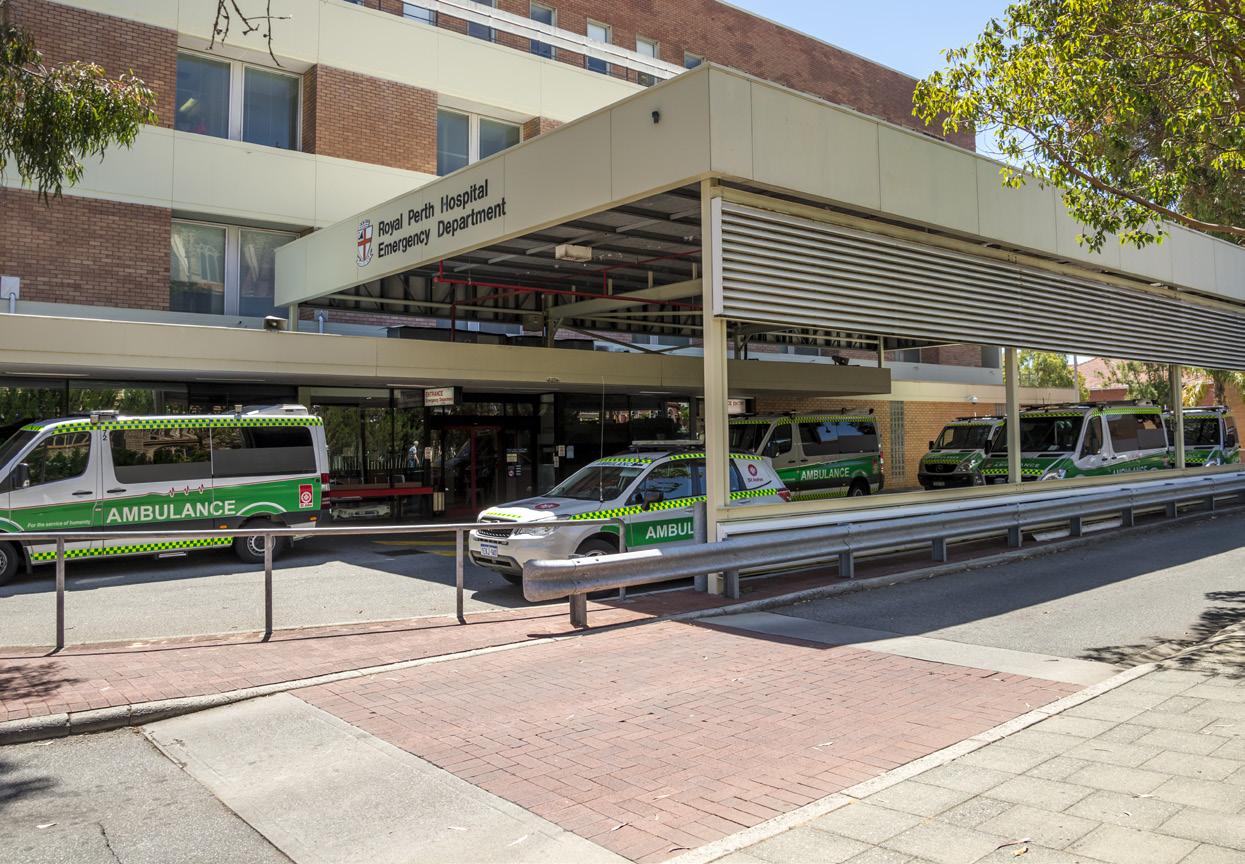
Western Australia is facing a record ambulance ramping crisis, with paramedics spending more than 7,000 hours waiting outside hospitals in September, marking the third consecutive month of unprecedented delays.
Union WA (UWU) has taken a leading role in coordinating health sector unions to demand urgent action from the State Government. Joining the UWU in this unprecedented alliance are the Australian Medical Association WA (AMA WA), Australian Nursing Federation WA (ANF WA), and the Health Services Union WA (HSUWA).
Together, they have developed a fivepoint plan aimed at easing pressure on hospitals and improving patient care (see diagram on next page). This coordinated effort reflects growing concern among frontline staff about the mounting challenges facing WA’s hospitals, from overcrowded emergency departments to critical staffing shortages. By presenting a unified front, the unions hope to push the State Government to implement systemic changes rather than temporary fixes, ensuring patients receive
timely care while supporting the wellbeing of healthcare workers.
Union leaders are expected to front media outside Royal Perth Hospital to call for faster solutions and reduced bureaucracy across the state’s health system.
HSUWA secretary Naomi McCrae emphasised that “the best diversion is prevention,” calling for significant investment in community mental health services to ease pressure on busy emergency departments. ANF WA secretary Romina Raschilla highlighted the strain on nurses and midwives, warning that ongoing staffing shortages and full wards are becoming increasingly unsustainable. AMA WA president Kyle Hoath also stressed the importance of a solutionsbased approach, advocating for swift action to better protect both patients and healthcare workers.
Healthcare workers on the ground report relentless pressure. Royal Perth Hospital anaesthetic technician Victoria Craft described the hospital as “always busy, always at full capacity,” while veteran ED nurse practitioner Terry Jongen said the increasing workload forces staff to cut corners, creating a demoralizing environment.
The State Government has welcomed union input but has not committed to the full five-point plan. Health Minister Meredith Hammat noted that initiatives such as the Virtual Emergency Department (WAVED) have already diverted thousands of patients away from emergency departments, and that planning for the 2026 winter season is underway.
“Winter planning for 2026 is already underway, and we are committed to working closely with health unions to ensure Western Australians receive the care they need when they need it,” Ms Hammat said.

Uniting solutions across hospitals to protect patients, staff, and the quality of care.
400 MORE AGED CARE BEDS 1
Free up acute hospital wards for patients who need urgent care most.
Redirect patients to primary care, virtual EDs, and mental health services. REDIRECT NONURGENT CASES 2
SEVEN-DAY HOSPITAL SERVICES 4
Expand weekend access to smooth Monday surges and maintain continuity of care.
Ensure Every Hospital Bed Is Properly Staffed for Safe Patient Care STAFF EVERY HOSPITAL BED 3
UNIFIED SYSTEMWIDE PROTOCOLS 5
Standardised procedures across hospitals for timely, consistent treatment.
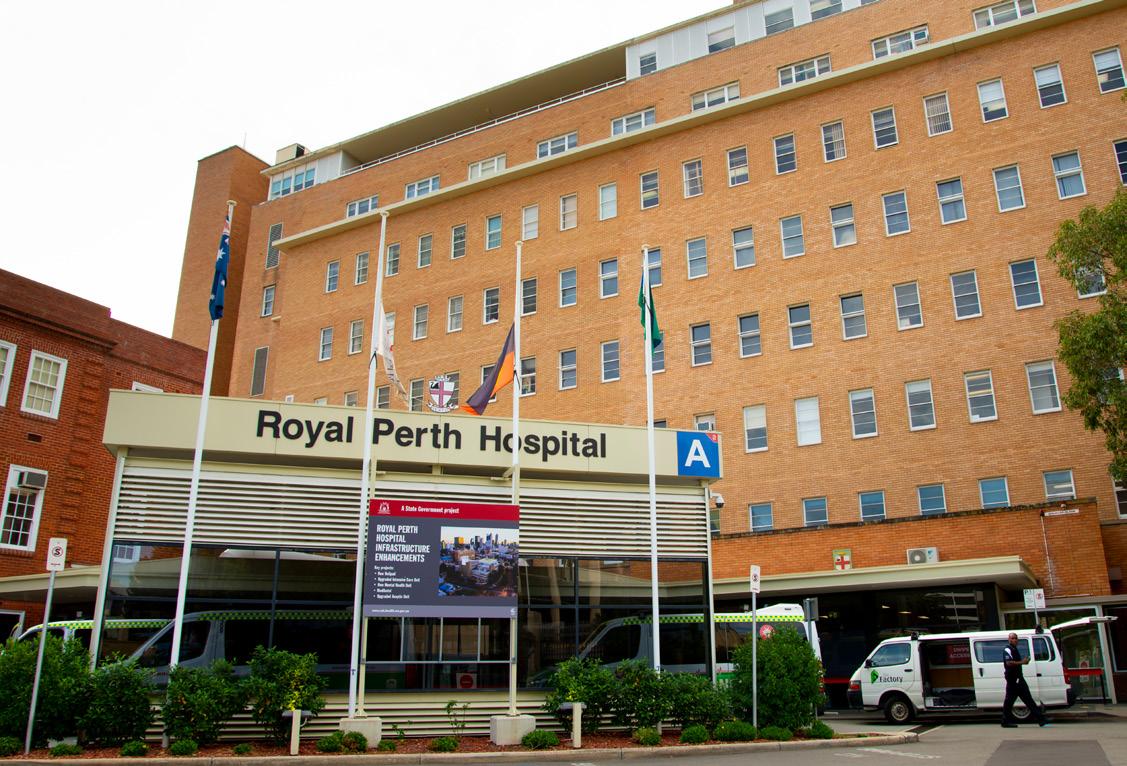

This article is based on a media release issued by Basil Zempilas MLA, Leader of the Opposition, and Libby Mettam MLA, Shadow Minister for Health.
THEY SPOKE ABOUT WESTERN Australia’s ambulance ramping crisis hitting a new and alarming milestone, with September marking the third consecutive month of record-breaking ramping at the state’s public hospitals.
Ambulances spent a staggering 7,257 hours ramped outside emergency departments last month — an unprecedented figure for a time of year when ramping typically declines with warmer weather and the end of flu season.
They spoke about how the worsening crisis has prompted an extraordinary response from frontline health unions.
The United Workers Union (UWU) joined forces with the Australian Medical Association, Australian Nursing Federation, and Health Services Union to release a joint health action plan in the absence of any credible solution from the State Government.
“When you have every major health union coming together to call for action, it says one thing loud and clear — the system is broken and the Government isn’t listening,” a UWU spokesperson said.
The unions’ joint statement underscores growing frustration among healthcare workers who continue to bear the brunt of chronic under-resourcing and overcrowded hospitals. Paramedics, in particular, are facing unsustainable delays in handing over patients — delays that directly impact emergency response times and patient outcomes.
Opposition Leader Basil Zempilas spoke about the situation as a sign the Cook Labor Government has lost control of the health system, with three straight months exceeding 7,000 ramping hours.
“This Premier once called 1,000 hours a crisis,” Zempilas said. “We’ve now had three months in a row of seven times
that number. Things are getting worse, not better — and it’s jeopardising the care of sick, injured and dying West Australians.”
Shadow Health Minister Libby Mettam spoke about how the record ramping figures highlight a health system that “simply does not have the capacity to cope,” calling on the Government to stop shifting blame and start fixing the problem.
For frontline ambulance officers and paramedics represented by the United Workers Union, the crisis isn’t abstract — it’s a daily reality. Each hour ramped represents another patient waiting for care and another crew delayed in responding to emergencies elsewhere.
The unions’ united call for action sends a strong message: frontline workers cannot continue to be ignored while Western Australia’s health system edges closer to collapse.
Being online has made meeting and interacting with others easier than ever before, but it’s important to know how to stay safe.
Here are ThinkUKnow’s top tips for safer online interactions:
• Question suspicious accounts, and trust your instincts if something doesn’t seem right - not everyone is who they say they are.
• Avoid meeting someone in person that you have only ever spoken to online. However, if you do meet, choose a public place and take someone with you.
• If something goes wrong, know how to block or un-match and report.
• Your safety should always come first! Sometimes things don’t go to plan but there is always help available. For more information, visit www.thinkuknow.org.au










Protect those who protect us.
Paramedics face unpredictable scenes. Axon’s ambulance-ready platform — Axon Body 4, Evidence.com, and real-time awareness — help make every response safer, more transparent, and easier to document. Pooled assignment and kiosk work ows t shift patterns; privacy-by-design and AI redaction support patient dignity and disclosure needs.
It’s support, not surveillance — built to help meet WHS obligations while reducing admin for crews. Learn more: au.axon.com
